Captured Angels
I saw the angel in the marble and carved until I set him free. Michelangelo
The concept and mystery of Angels, those classical creatures with wings, are depicted by artists in their artworks through the entire history of art. You can find them in paintings and illustrations of fairy tales, stories, poetry, myths, legends, religion, astrology and even in philosophy.
As long as I can remember, I have been painting and drawing angels, often as beautiful winged women. Although spiritual, I adhere to no organized religion, so why have I spent so many hours creating angel images? After much introspection, I realize that my Slavic heritage and art studies have culminated into this interest/obsession in the angelic form. The following is an account of my artistic and spiritual journey through Slavic Orthodoxy and university education.
Vladimir is a ancient Slavic city east of Moscow. It is part of the Golden Ring, a cluster of ancient and historical towns. The University located in Vladimir is renowned for among other disciplines, art education and heritage icon painting. My post graduate studies in art took place in this amazing environment of learning, called "the Museum Under the Open Sky." Looking down from the nearby hills, one is overwhelmed by the shear number of golden cupolas, of the many cathedrals and chapels. In the city center, the Assumption Cathedral houses a richly decorated altar and 15th-century frescos. There are simply angels everywhere!
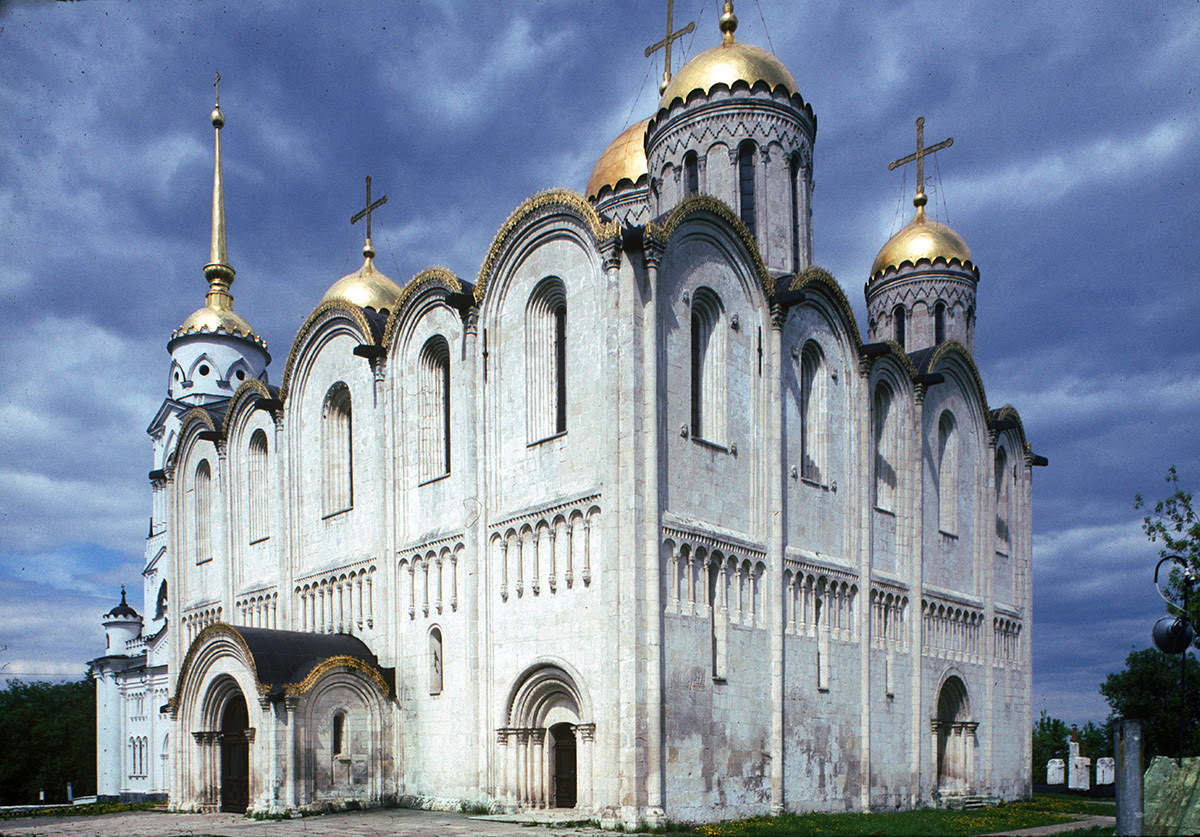
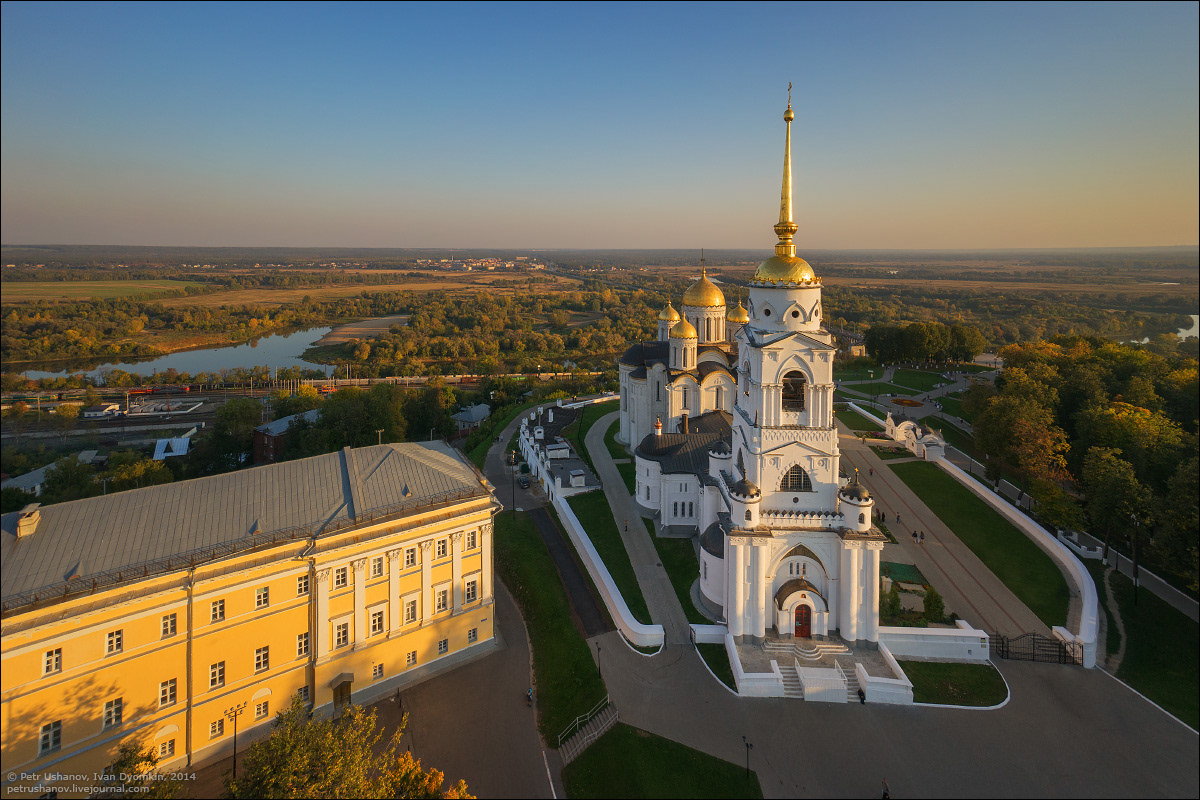
Dormition Cathedral, Vladimir.
Of my particular interest is the Dormition Cathedral. It was commissioned by Andrew the Pious in his capital, Vladimir, and dedicated to the Dormition of the Theotokos, whom he promoted as the patron saint of his lands. Originally constructed between 1158 and 1160, the cathedral, with its six pillars and five domes, was expanded between 1185 and 1189 to reflect the augmented prestige of Vladimir. At 1178 square meters, it remained the largest Slavic church for several hundred years. Although, many cathedrals were destroyed or left in ruins during the time communism, the Dormition never waned in grandeur.
The exterior walls of the church are covered with elaborate carvings. The interior was painted in the 12th century and then repainted by Andrei Rublev and Daniil Chernyi in 1408. A lofty belltower, combining genuine Slavic, Gothic and Neoclassical influences, was erected nearby in 1810.
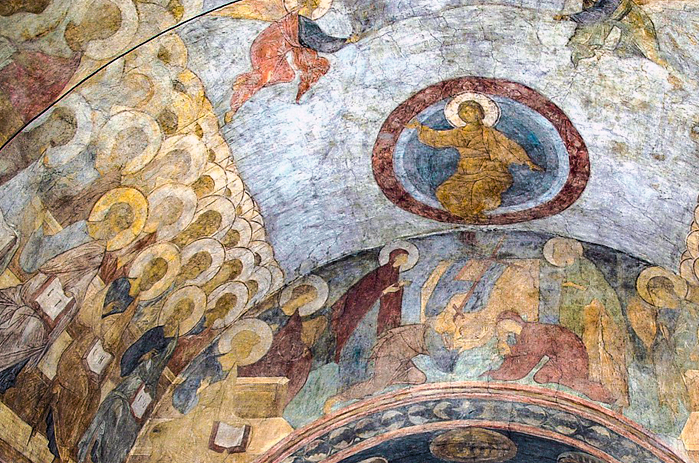
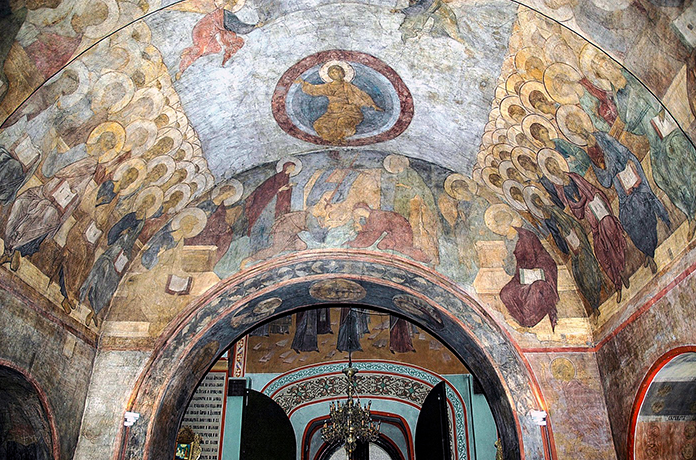
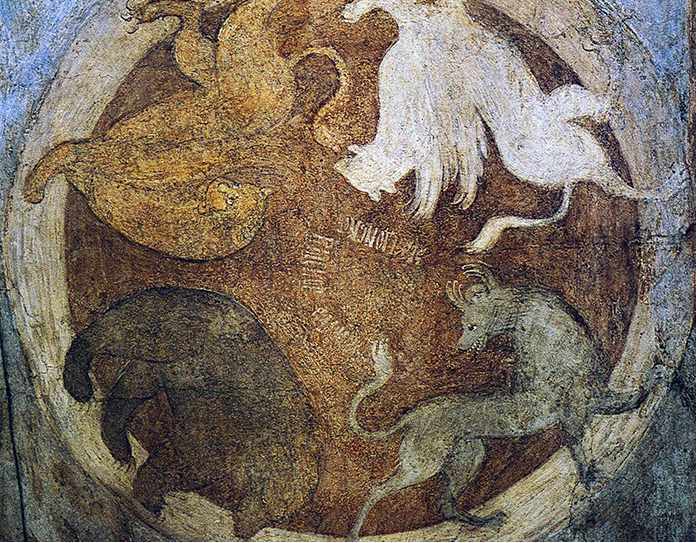
Andrei Rublev Murals of the Dormition Cathedral in Vladimir.
Together with his friend Daniil Cherny, Rublev (the most famous of all icon painters) painted the frescos of the Assumption Cathedral in Vladimir in 1408. The very common composition, "The Last Judgment" occupies the central place in this ensemble. This cathedral was located right on my route home from classes each day. I would often sneak in and stand quietly to absorb the majesty of Rublev's painting, augmented by the a cappella choir reverberating through the great halls of the cathedral. I always felt so blessed to have this experience on my walk home each day.
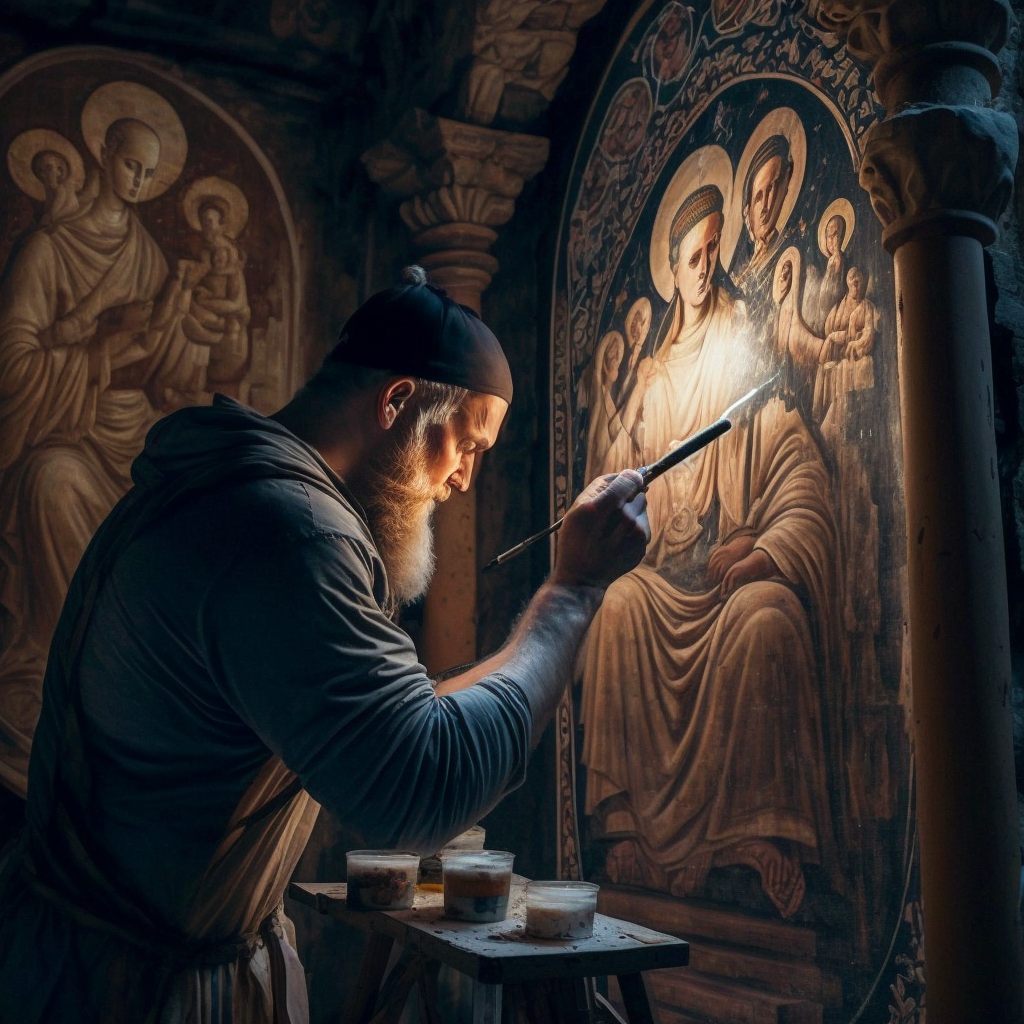
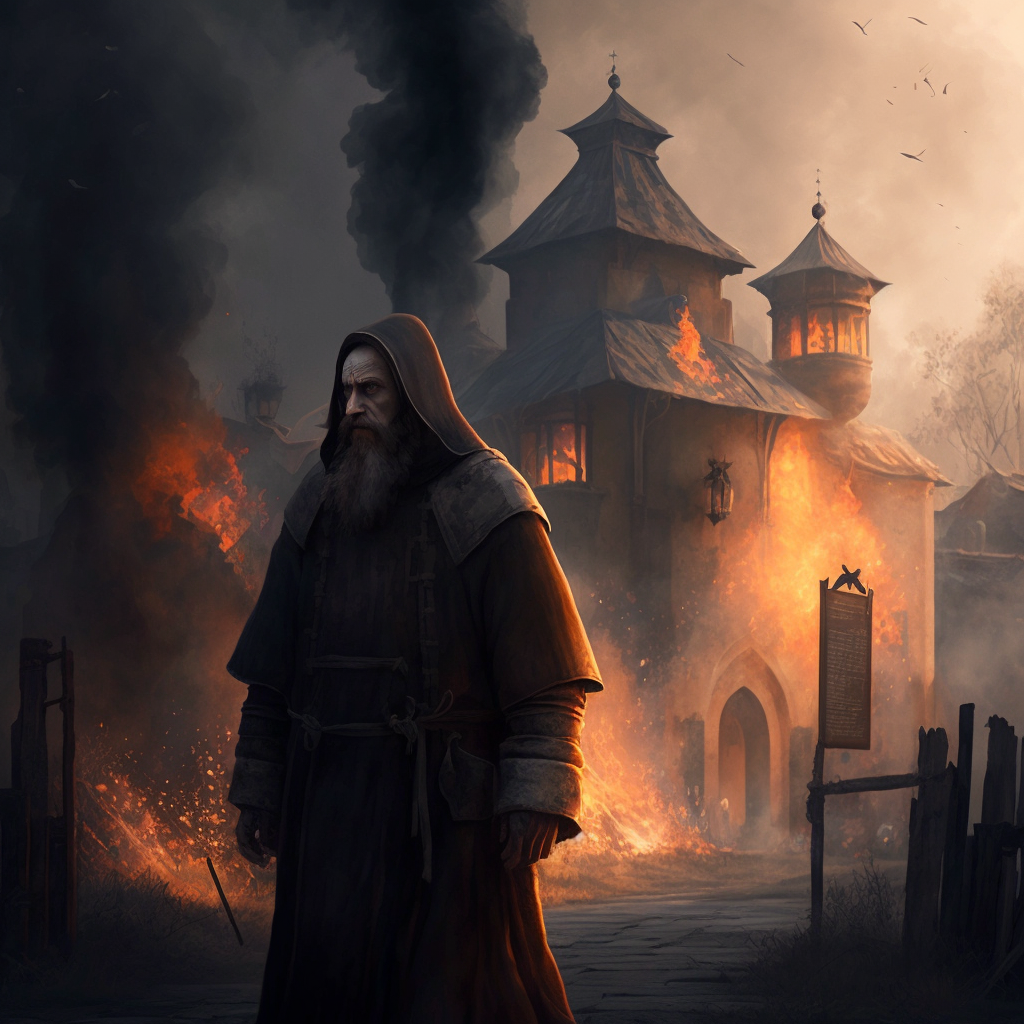

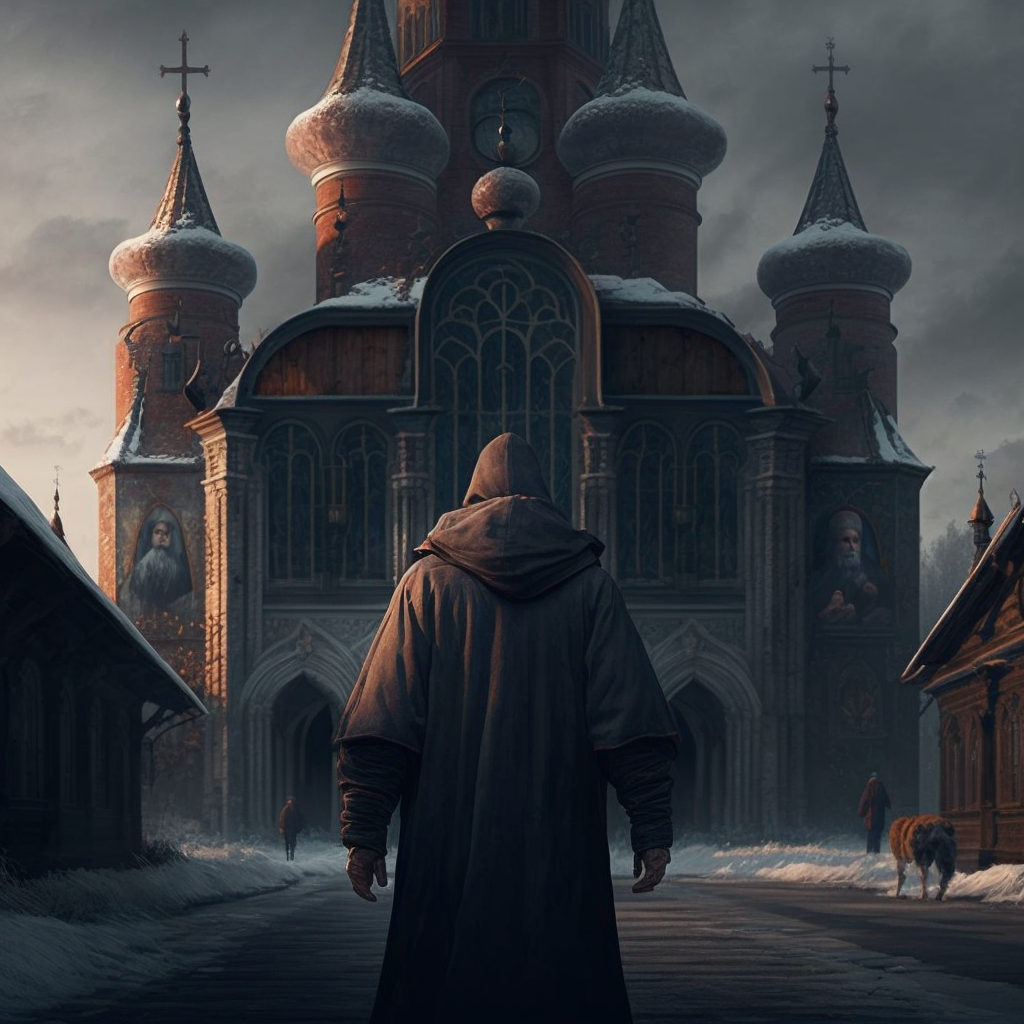
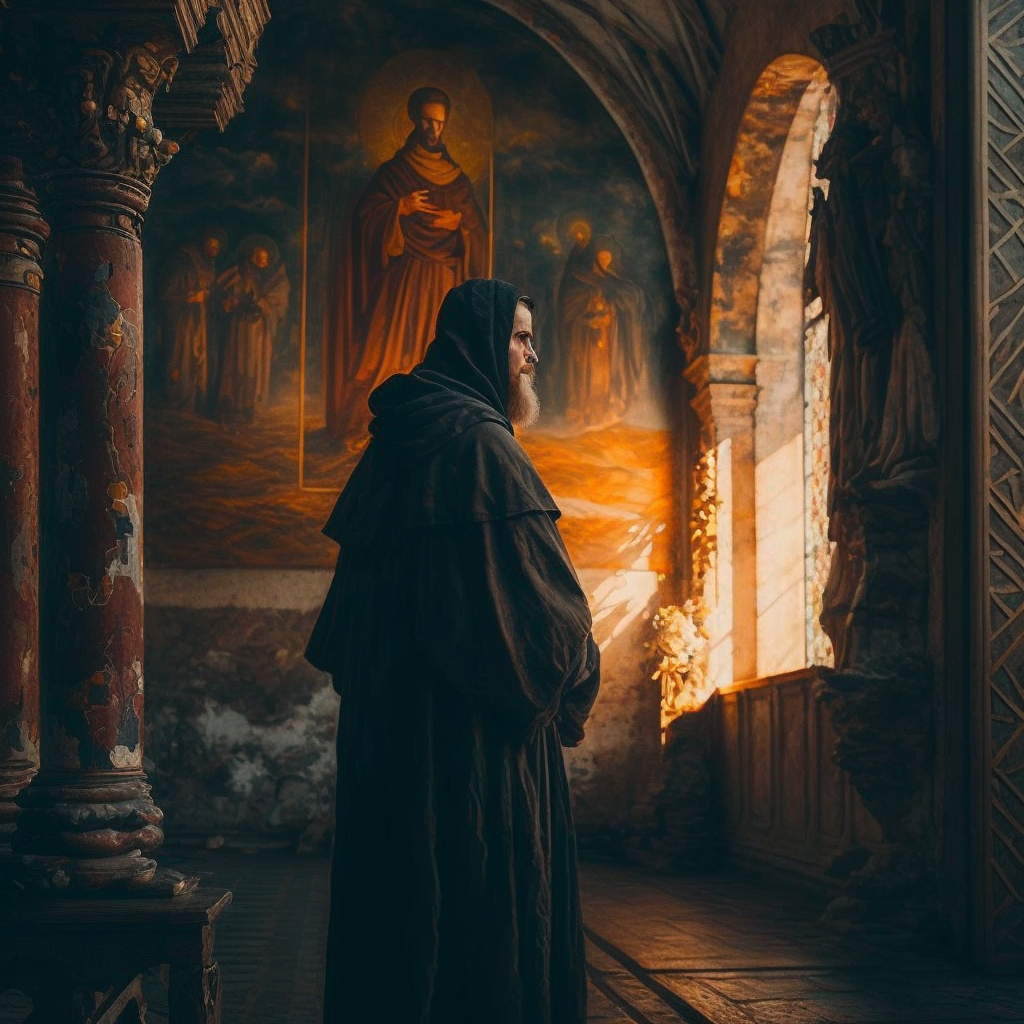
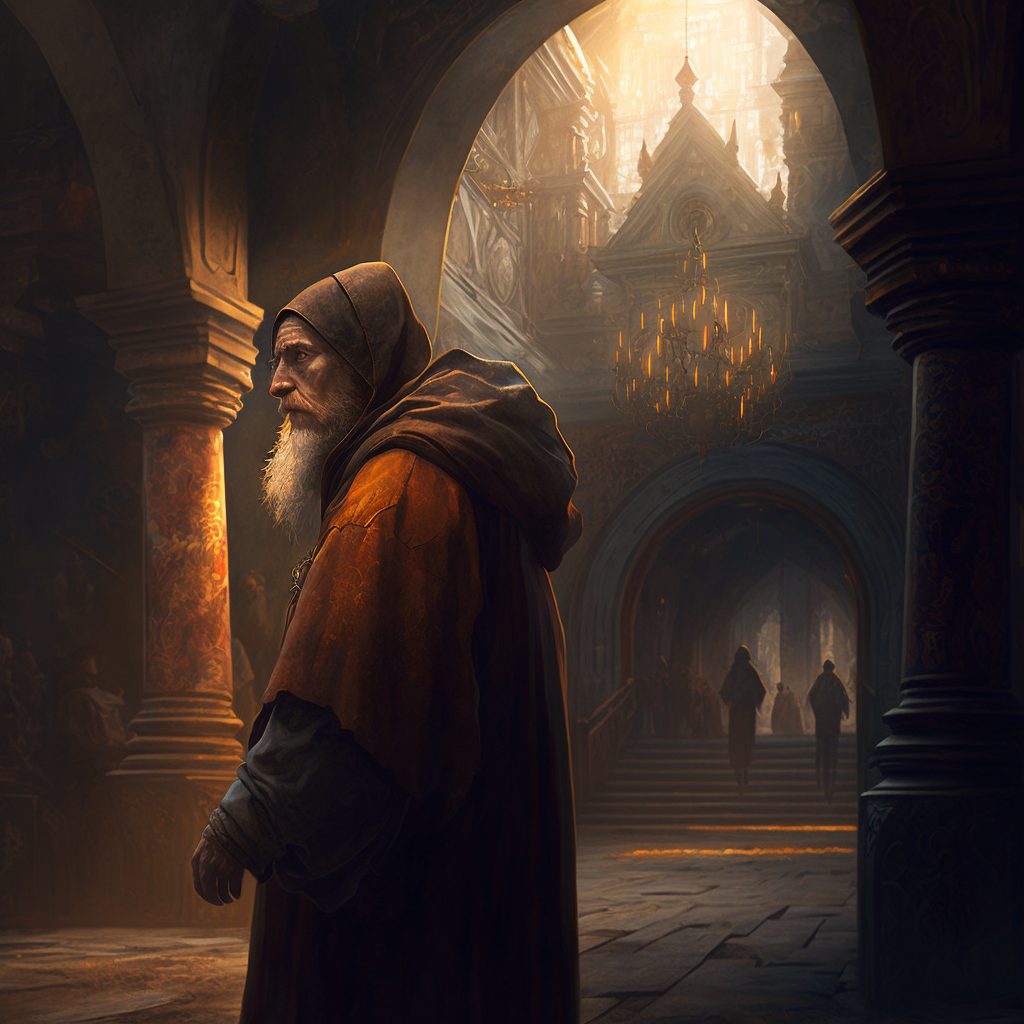
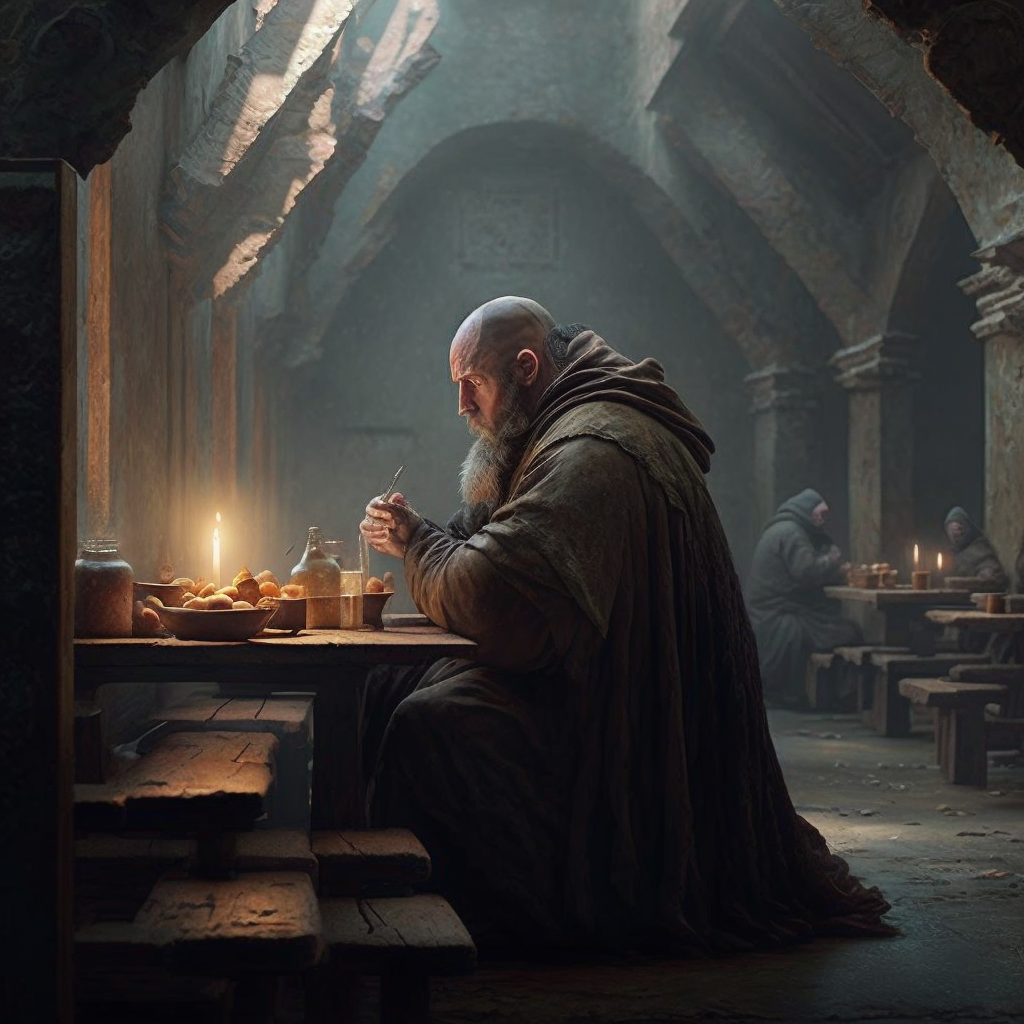
Through centuries of wars, monks rebuilt and rebuilt. Monks wore many hats... builders, gardeners, artists and even warriors.
Andrei Rublev was brilliant artist of the era of Hesychasm, one of the greatest medieval Russian painters of Orthodox Christian icons and frescos. His paintings are filled with "quiet light," but the quiet light evenly fills the space of the icon, expanding the space. Rublev’s images are always characterized by balance and calm state of mind, they are like pure transparent water.
Andrey Rublev "Trinity" 1411 or 1425-1427.
“Trinity” is an icon of the Holy Trinity, painted by Andrei Rublev in the 15th century, the most famous of his works and one of two (together with frescos in Vladimir ) surviving works. It is one of the most famous Russian icons. It depicts three angels sitting at an altar, on which stands a bowl with the head of a calf being sacrificed.
Something I have often enjoyed doing is to paint on old musical instruments. They may by playable or not, and make very interesting and beautiful hall hangings. One day I came across an old balalaika and thought it might be a perfect subject for my own painting of the holy trinity.
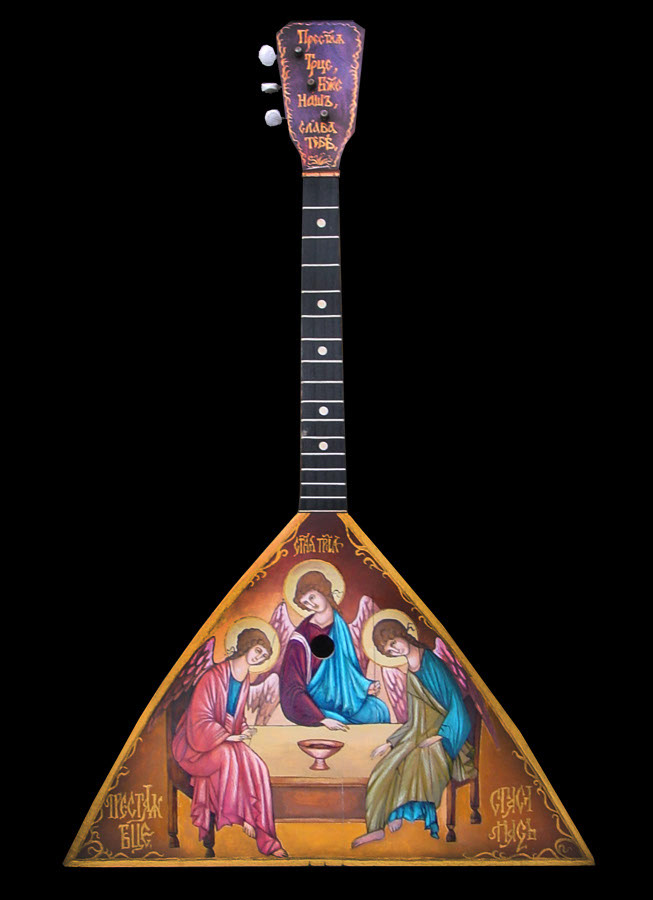
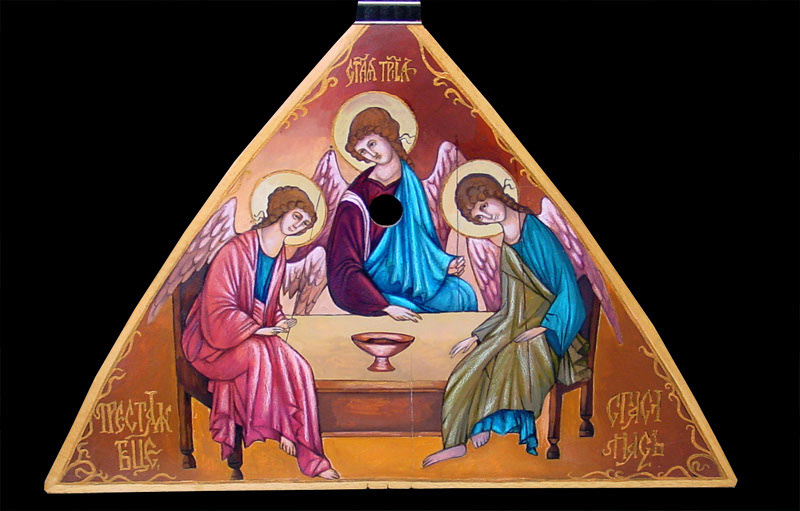
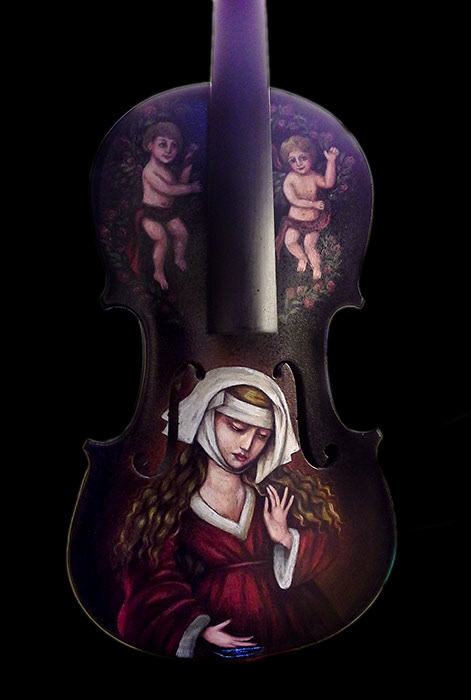
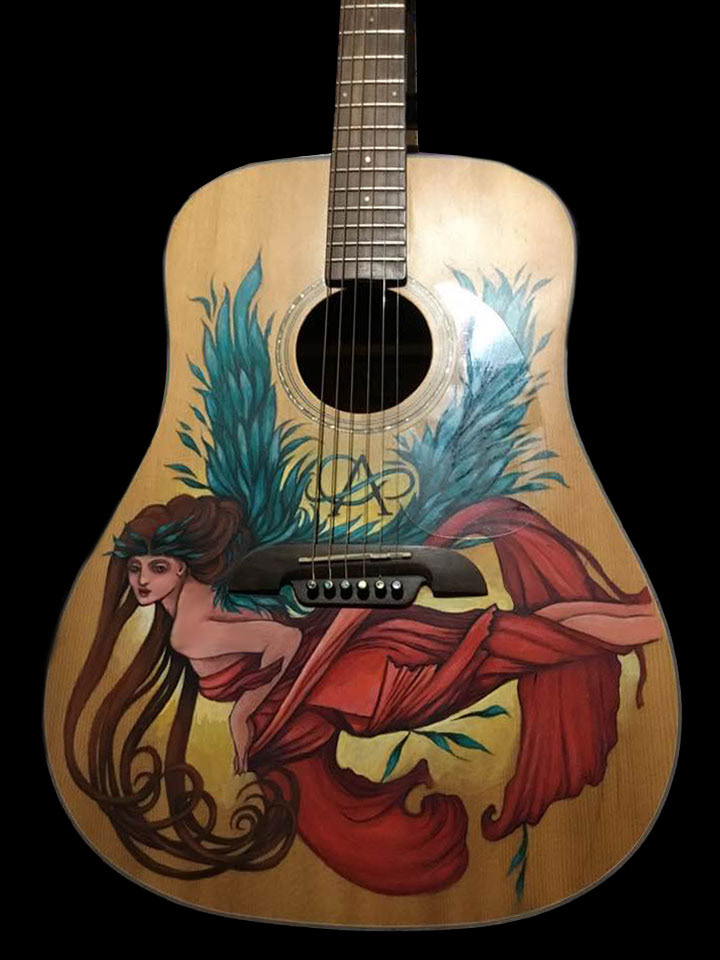
My paintings on musical instruments.
My art school was located in a very unique and historic building. Although its actual age wasn't known, it was very old and had many uses down through the years. The historic building on Bolshaya Moskovskaya Street (educational building No. 9), together with the adjoining building of the Central Officer Courses (CSC), was built, added to and rebuilt between the 18 and 19 centuries and served many functions including the Vladimir Theological Seminary. Until 1988, the Vladimir school No. 14 was located in it, and then the art and graphic faculty (hudgraph) of the Vladimir Pedagogical Institute settled. For 30 years, designers, restorers and teachers of drawing and painting have been trained in the old building.
In spite of my endeavors, I was unable to find a comprehensive history on the building on Bolshaya Moskovskaya Street. Partially due to the abandonment of history after the revolution. The walls were crazy thick and the rooms were very cold due to inadequate heating systems. On the back of the building was a very quaint cathedral where the art archives were located. But the most incredible area of this building was the very creepy basement. It was abandoned and dank and dark and rarely visited. There were classes in some of the more prominent rooms early on but soon even these were moved elsewhere. The lack of electric lighting added to the mystery.
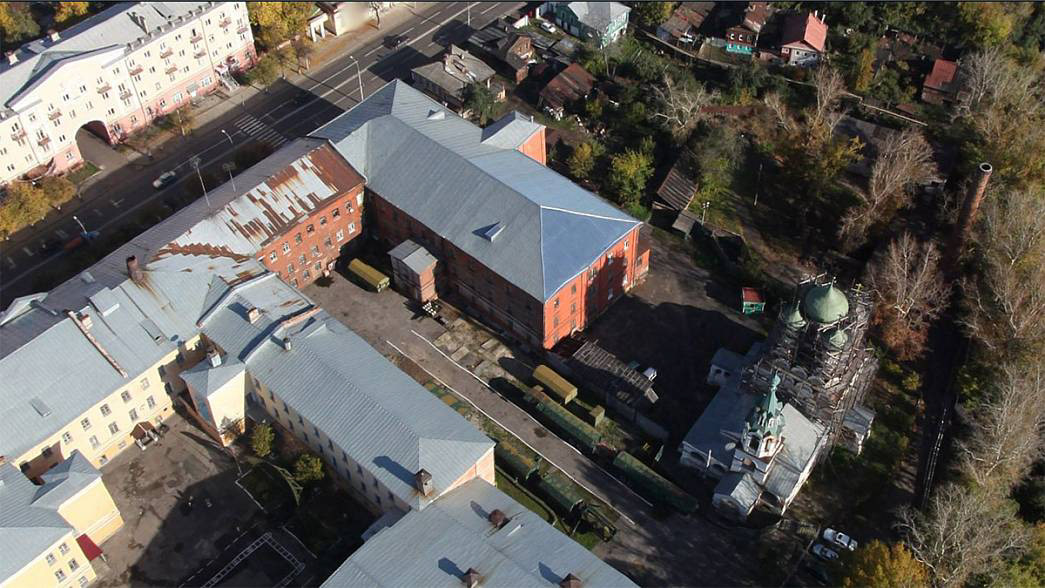
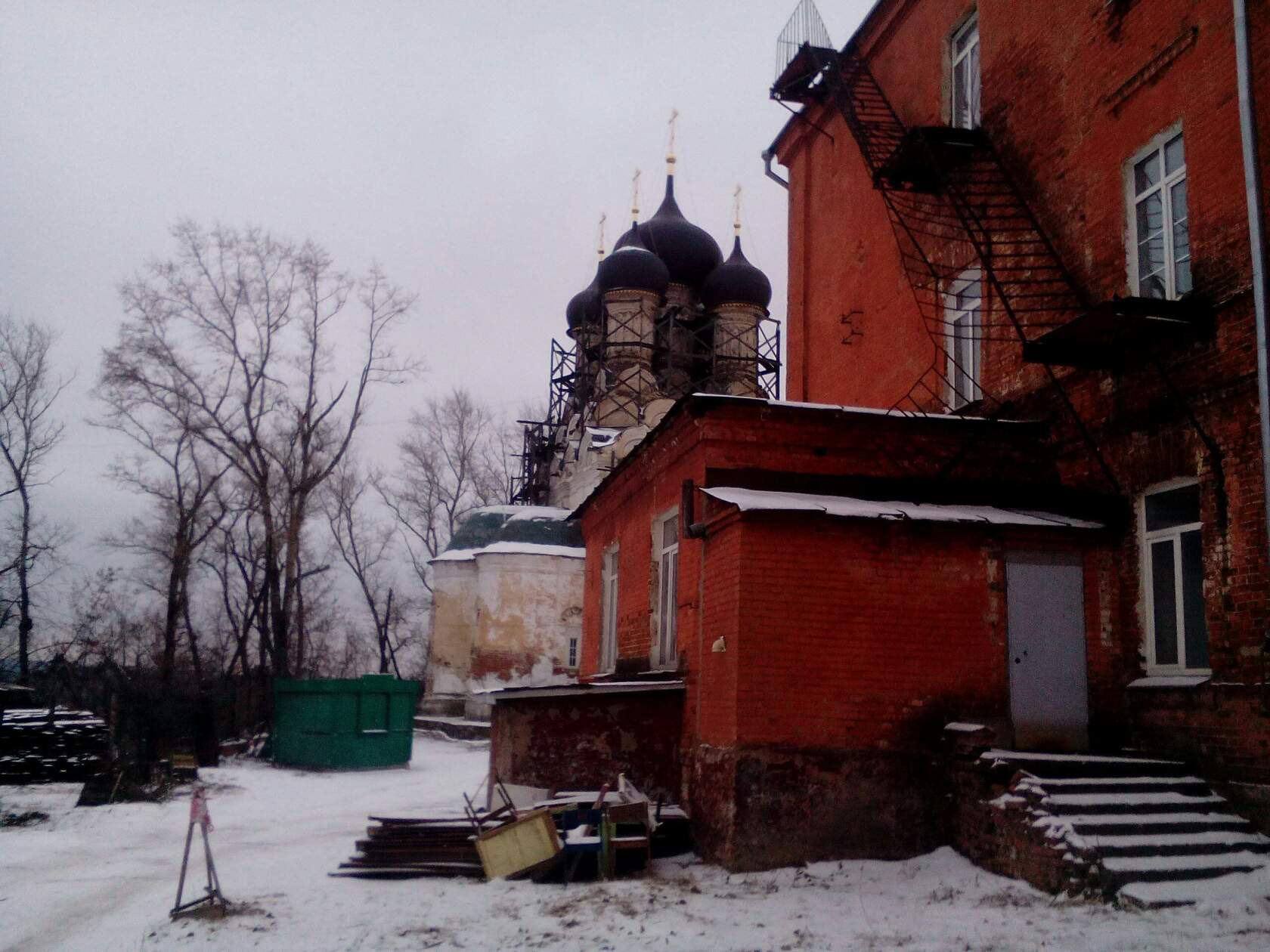
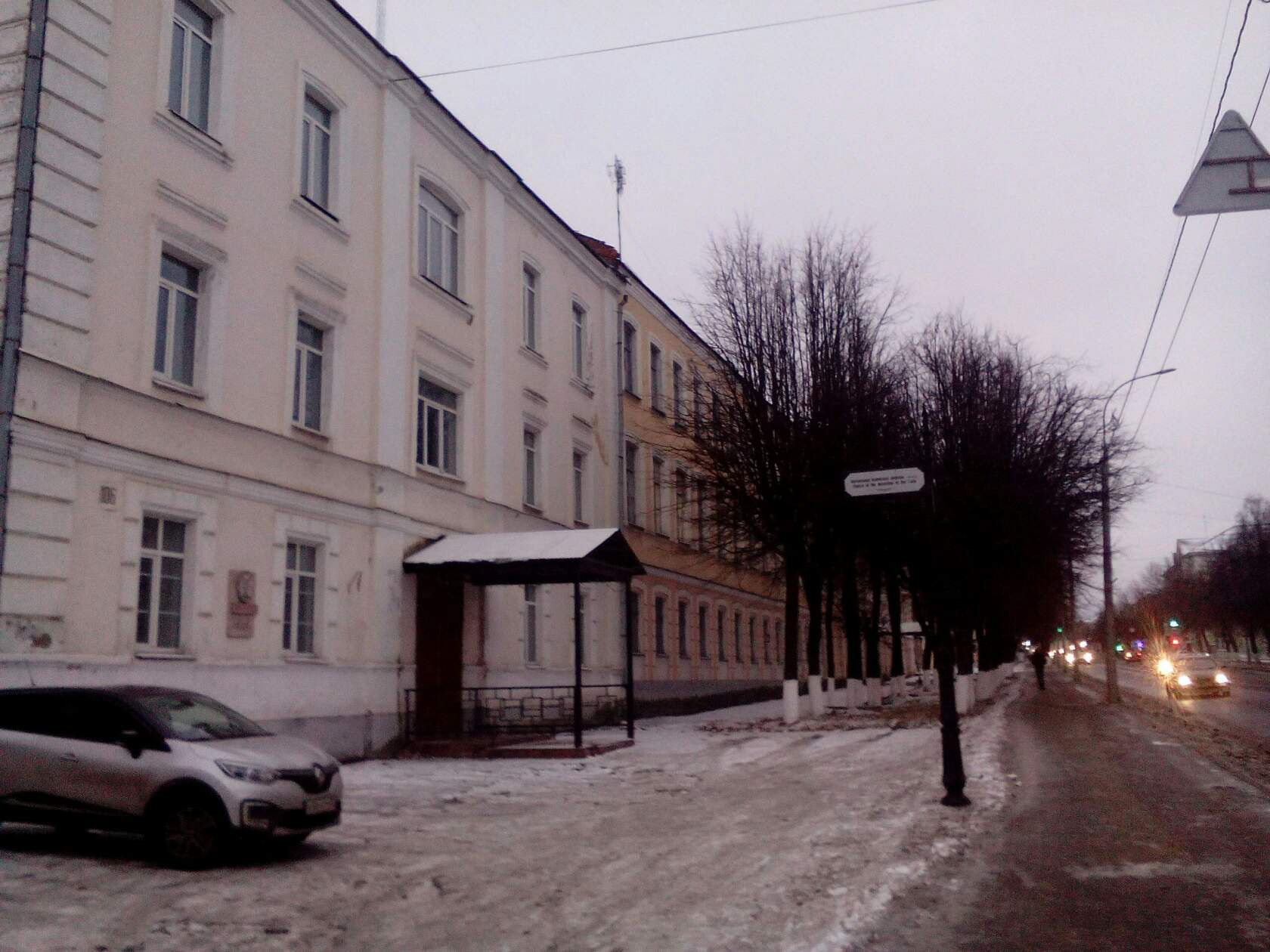
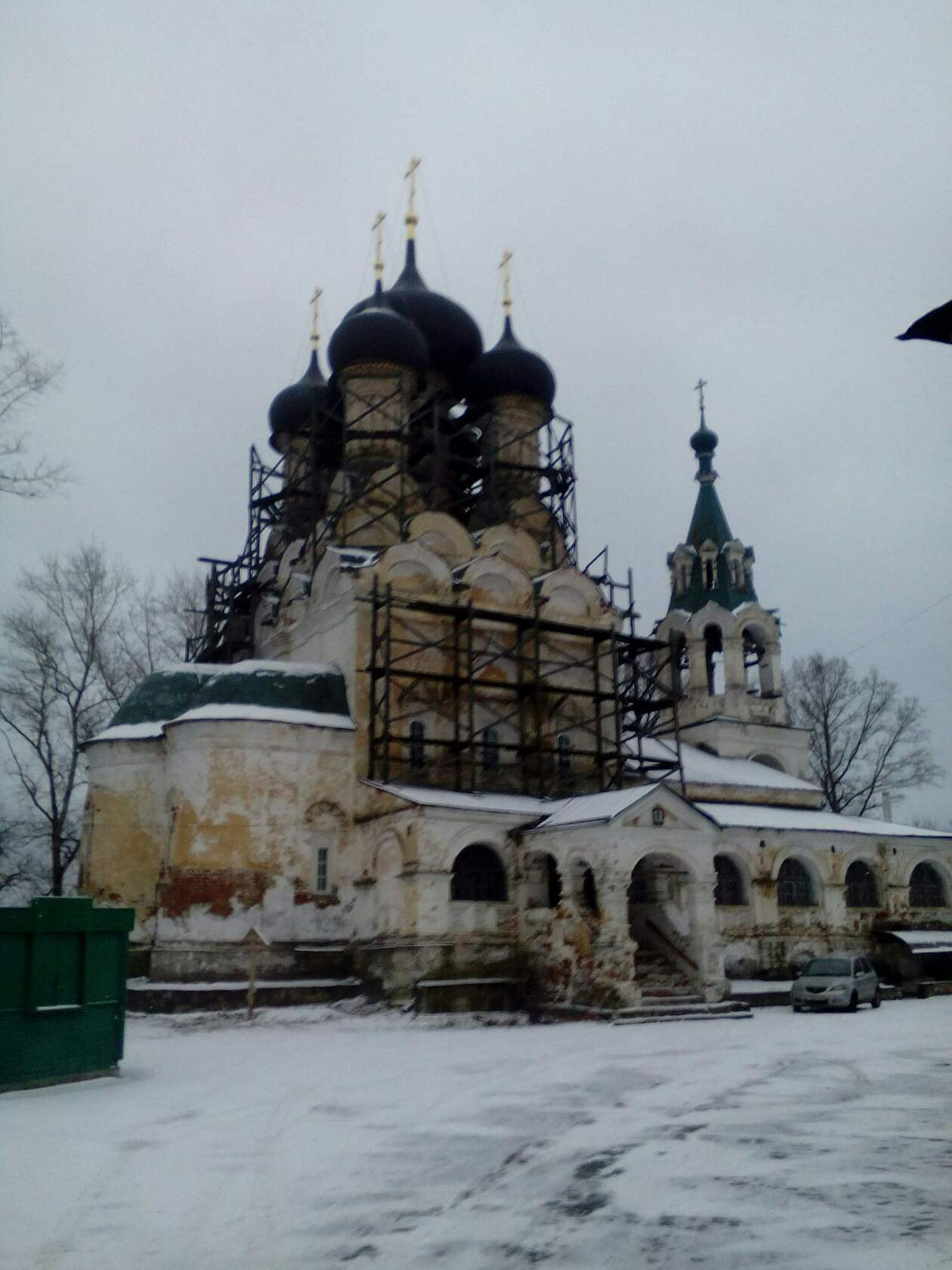
Art Building with cathedral (art archive) behind.
My painting room shown after the building was no longer used for classes. It is currently in the process of restoration.
I was truly blessed to have such amazing art professors. Some were very famous and for me, very influential. Two that immediately come to mind were Vladimir Efimovich Ulitin and Alexei Antonov. Mr. Antonov was a watercolor artist, as am I, but our styles could not be more different. He would paint the most beautiful watercolor and them wash it off completely. He would do this over and over until he would develop very delicate and subtle tonal values. I've never known any other artist with this style. My style is Alla Prima (wet in wet), where paint is applied wet on wet without letting earlier layers dry. In Italian, the term alla prima means “at first attempt”. It allows no place for mistakes but gives maximum vibrancy and translucency. In spite of our differences, as my mentor, he was a very important instrumental in my artistic journey.

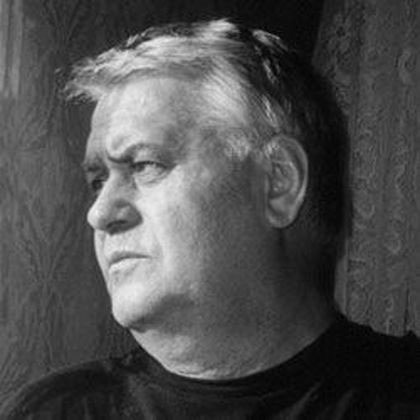
Vladimir Efimovich Ulitin, Alexei Antonov.
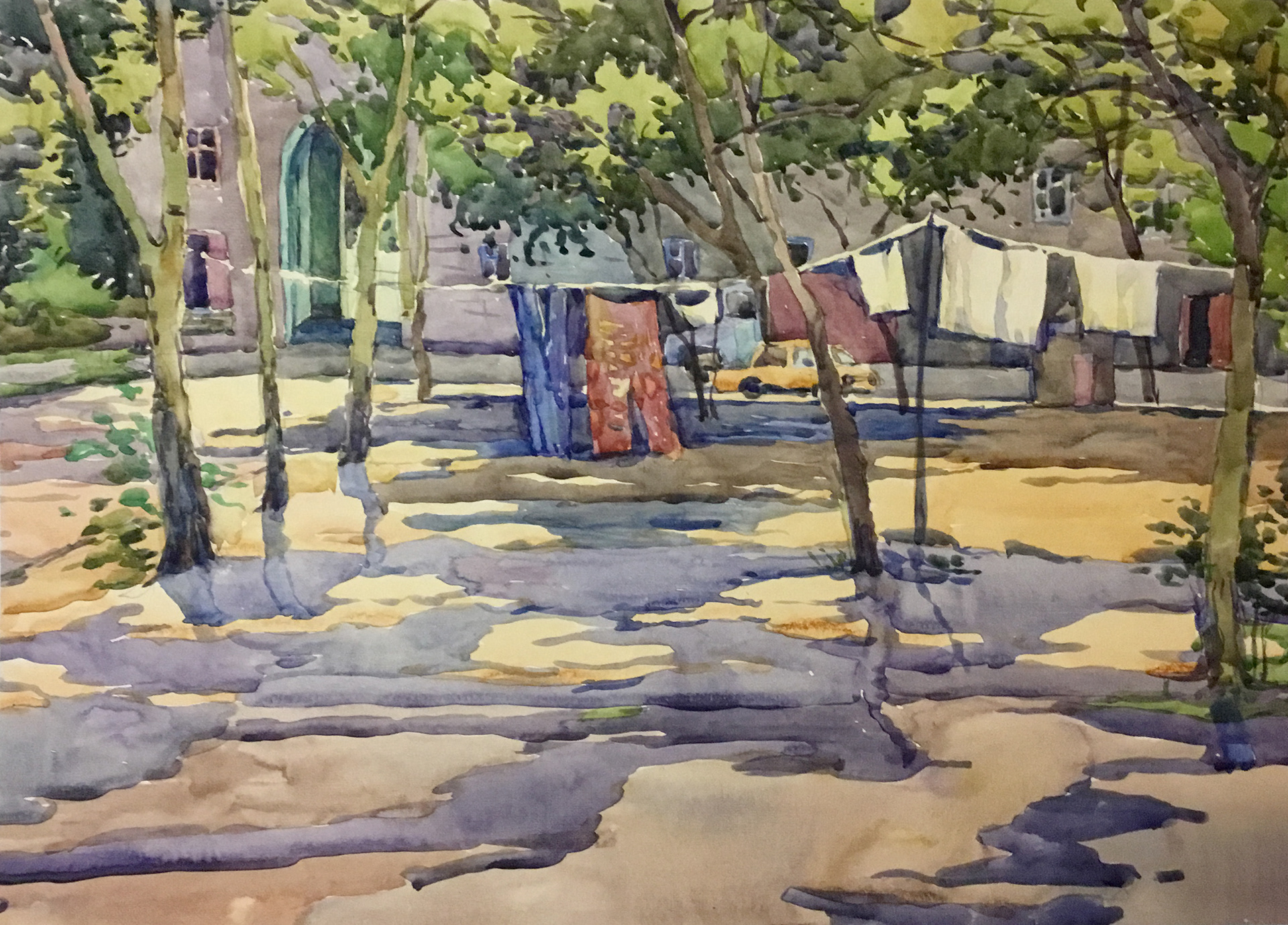
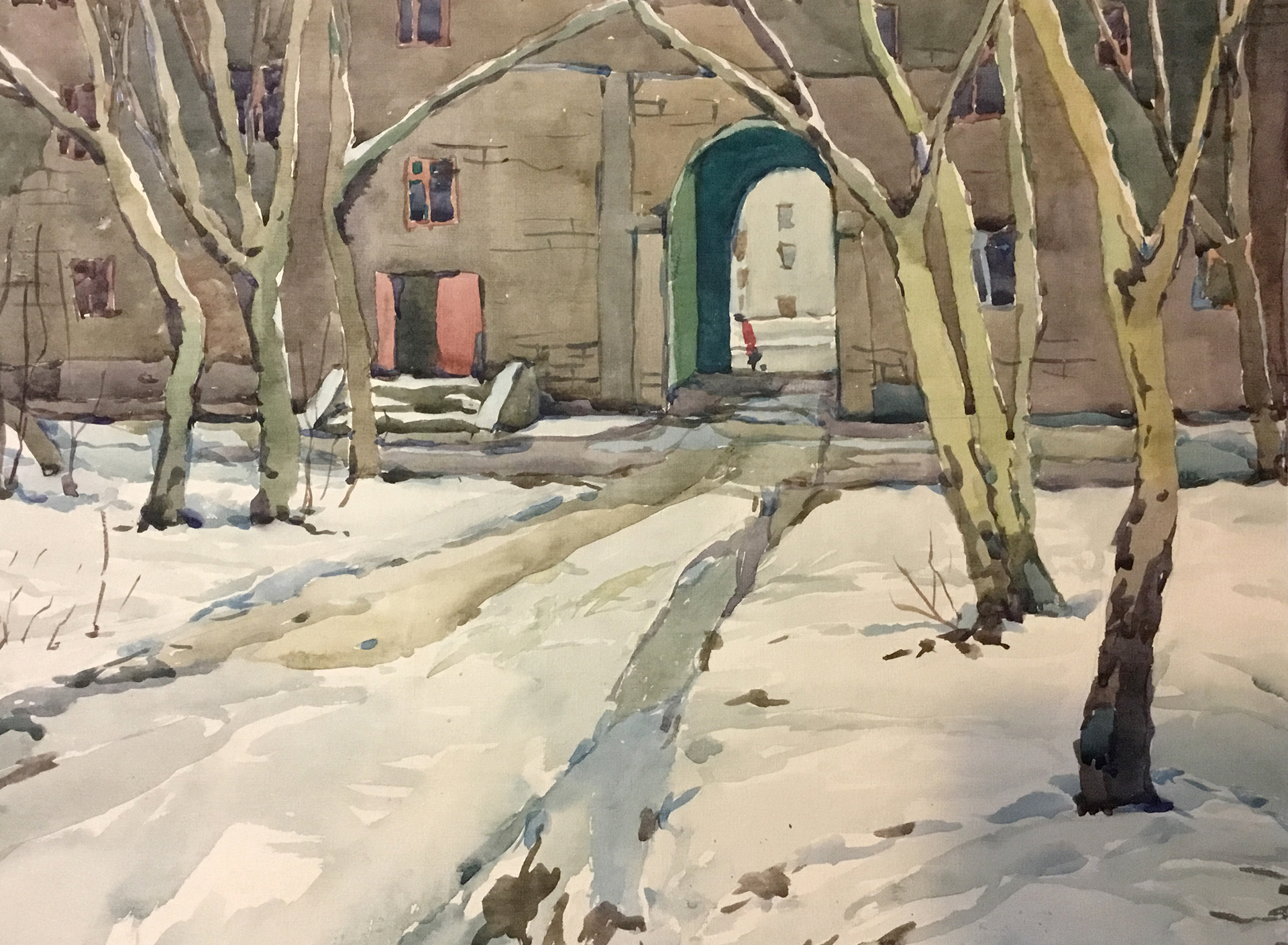
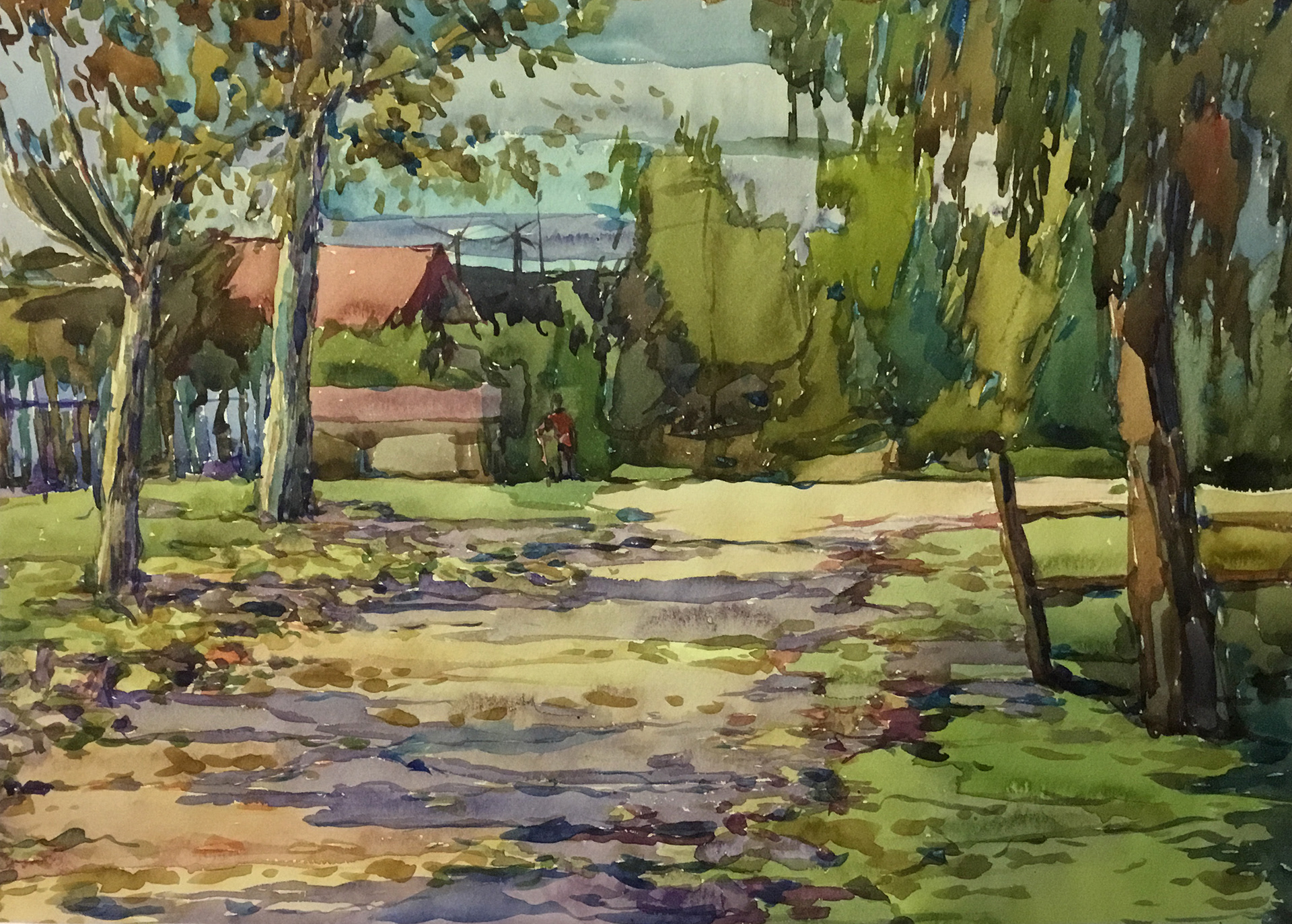
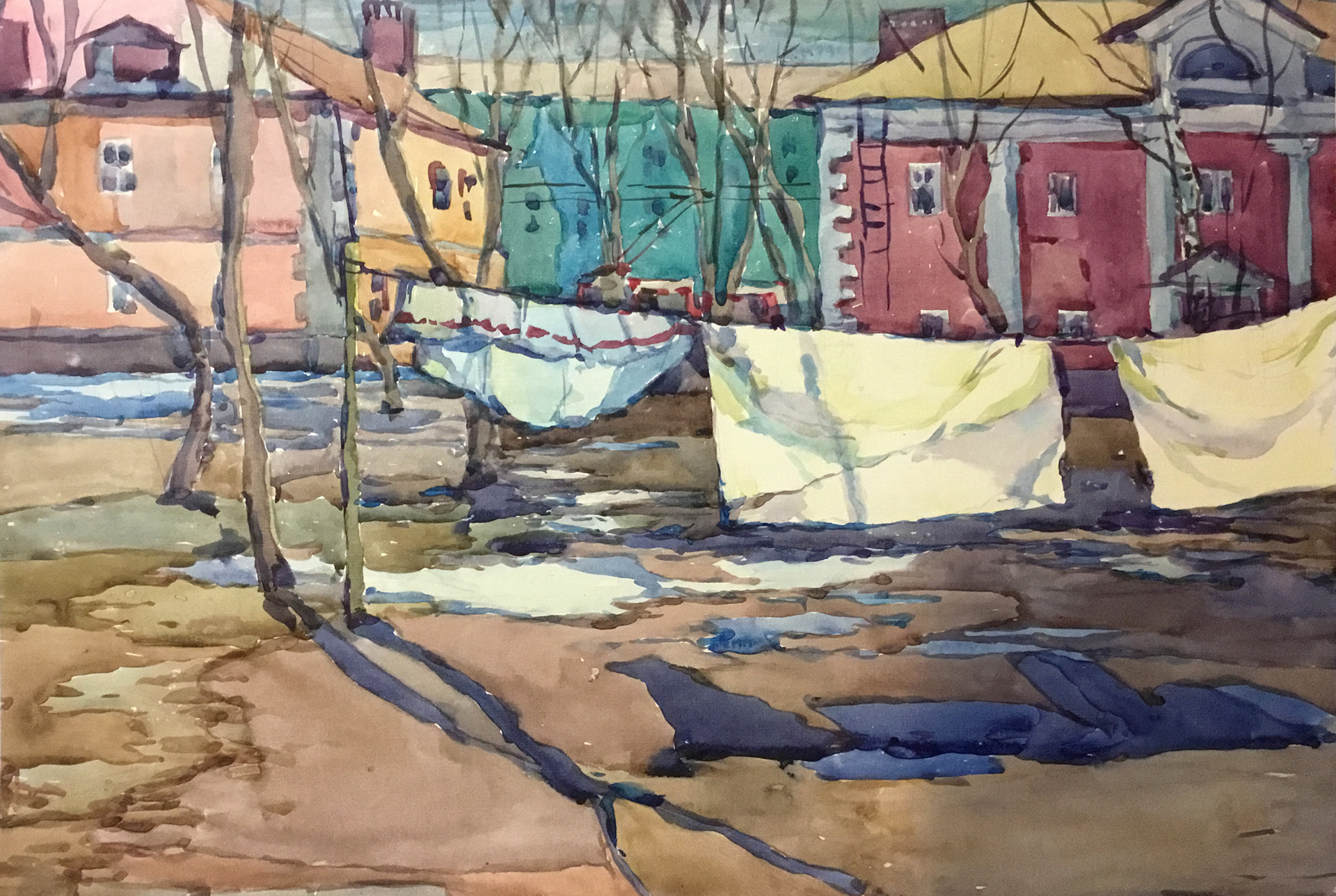
My student watercolors. 1992
The art building was handed over to the Russian Orthodox Church in 2020 and is the center of the Vladimir Seminary, an icon-painting workshop and the Department of Social Service of the Vladimir Diocese.
Curious that the building began as a religious building, went through many unrelated uses and is now being restored to its original use (painting and restoring icons).
The use and making of icons entered Ancient Rus' following its conversion to Orthodox Christianity in AD 988. As a general rule, these icons strictly followed models and formulas hallowed by Byzantine art, from the capital in Constantinople. As time passed, the Russians widened the vocabulary of types and styles far beyond anything found elsewhere in the Orthodox world.
I have been involved in icon painting and restoration, but my first "real" experience happened during my summer practice - children's camp. I was in my third year of university and as part of my pedagogical studies, I was sent to a children's camp to teach art classes. Summer camp was in the middle of nowhere. It was so far away that it didn't even have bus service. There was a small village close by with an abandoned church which instantly drew my attention. I would teach most of the day but in the middle of the day there was a "quiet hour" which afforded me the time to take my easel and visit the church.
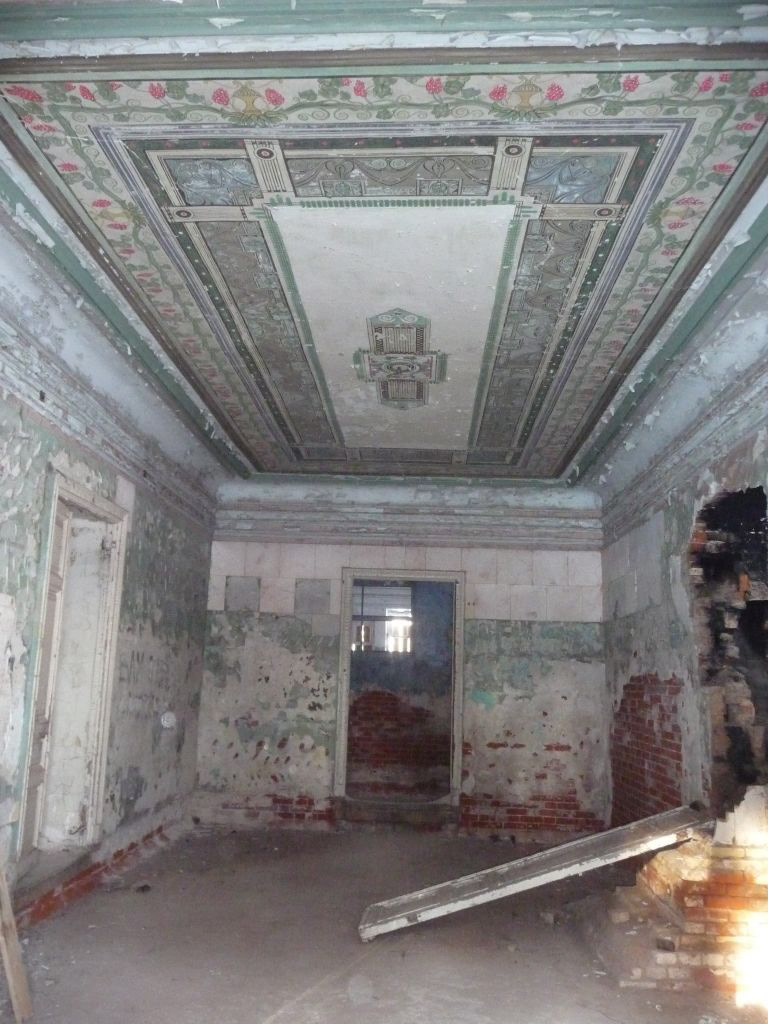
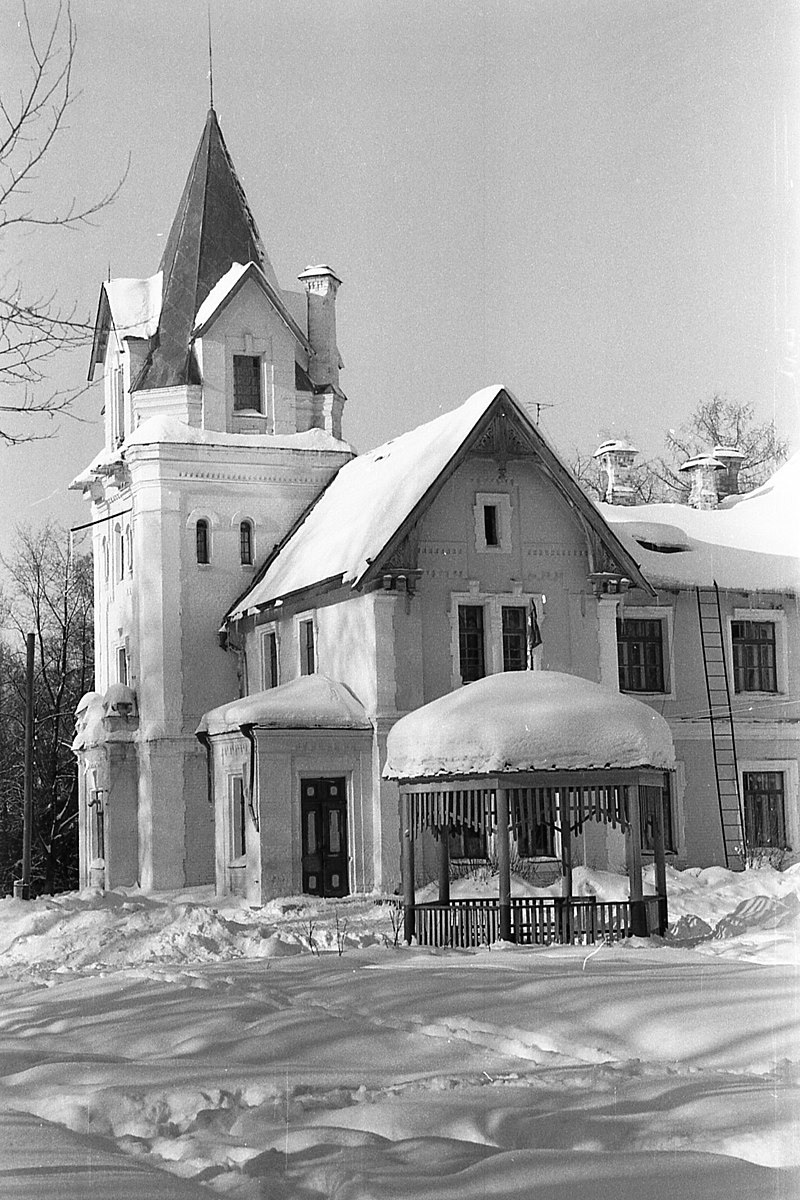
Penkino 1965.
One day while painting the abandoned church, a young man approached me. He was very knowledgeable concerning the area and the church in particular. He told me his family story. His grandfather was the priest of the church. This young man would meet me at the church each day and after a little while he asked me to help him with a family problem. His grandmother was suffering dementia and in times of clarity, she would look for a particular icon that had been lost many years before. He asked it I would reproduce this icon thinking that it was so important to his grandmother and her passing from this world to her next. I agreed, and we started working on the icon immediately. He insisted on using "egg tempera" (fast-drying painting medium consisting of colored pigments mixed with a water-soluble binder medium, usually glutinous material such as egg yolk) which I didn't have access to. Every evening he would bring a dozen fresh eggs and we would mix the pigment and egg yolks to make the paint. Since this is in the time before the internet and because we were located so far from any other resources, all I had to go on was a description of the icon. We worked every evening 'til late. It was trial and error, but in the end, he was very sure that I had it perfectly rendered. His grandmother recognized the icon as the one for which she had been searching. She passed away shortly after.
Unfortunately, I was unable to photograph my work, but the icon below is the closest reference I can find today.
Archangel Michael on the icon of Theodore Poulakis, 2nd half of the 17th century.
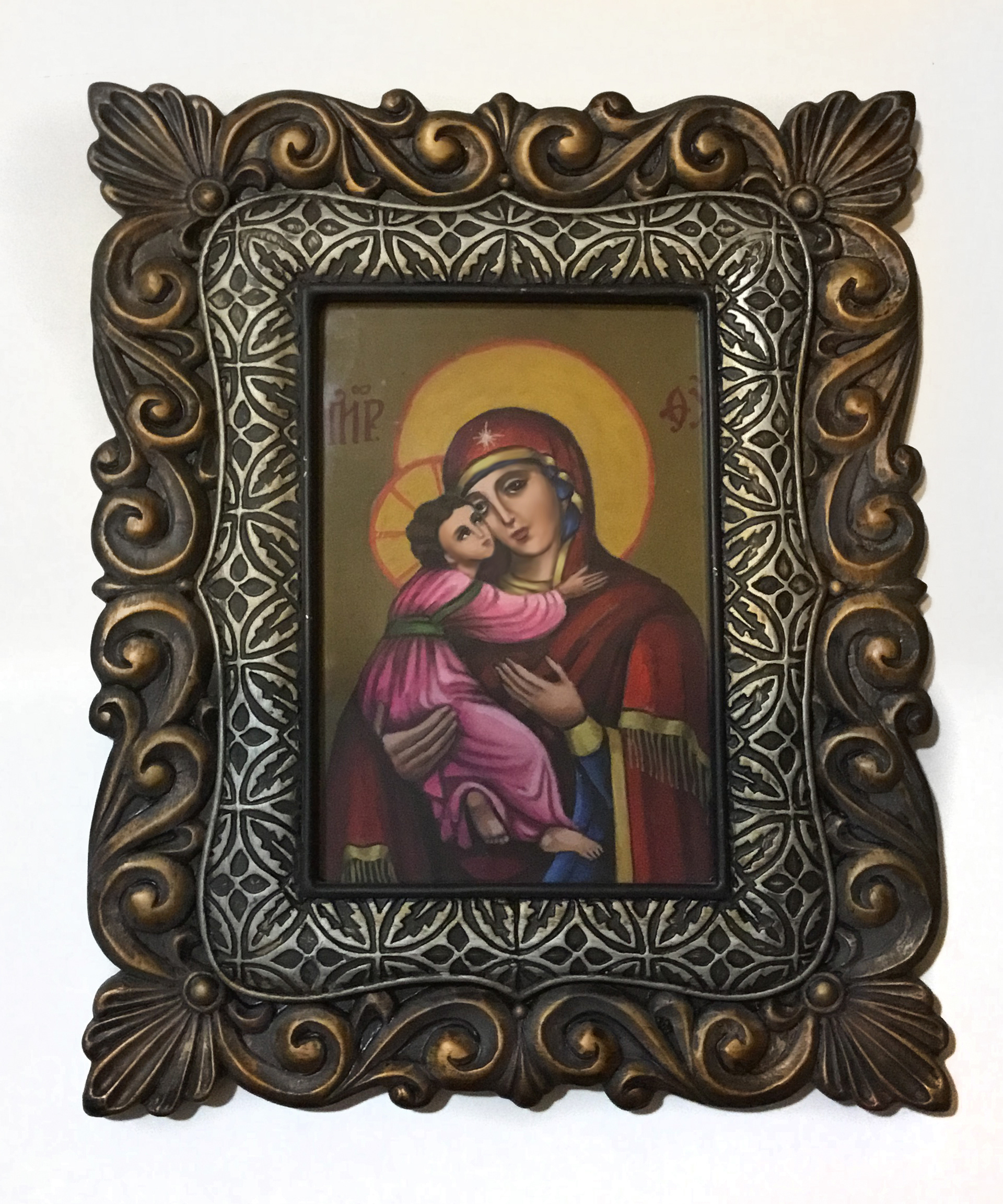
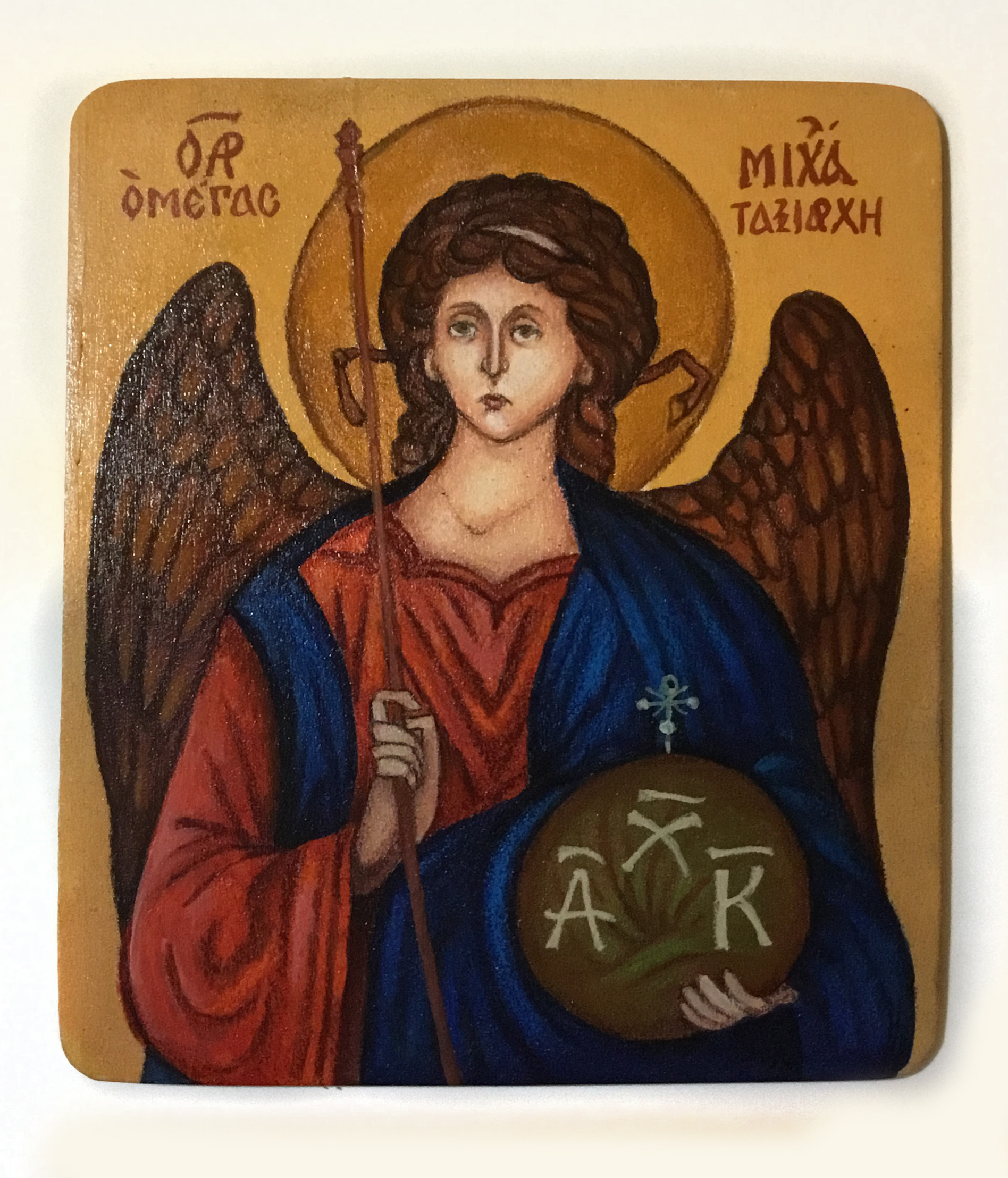
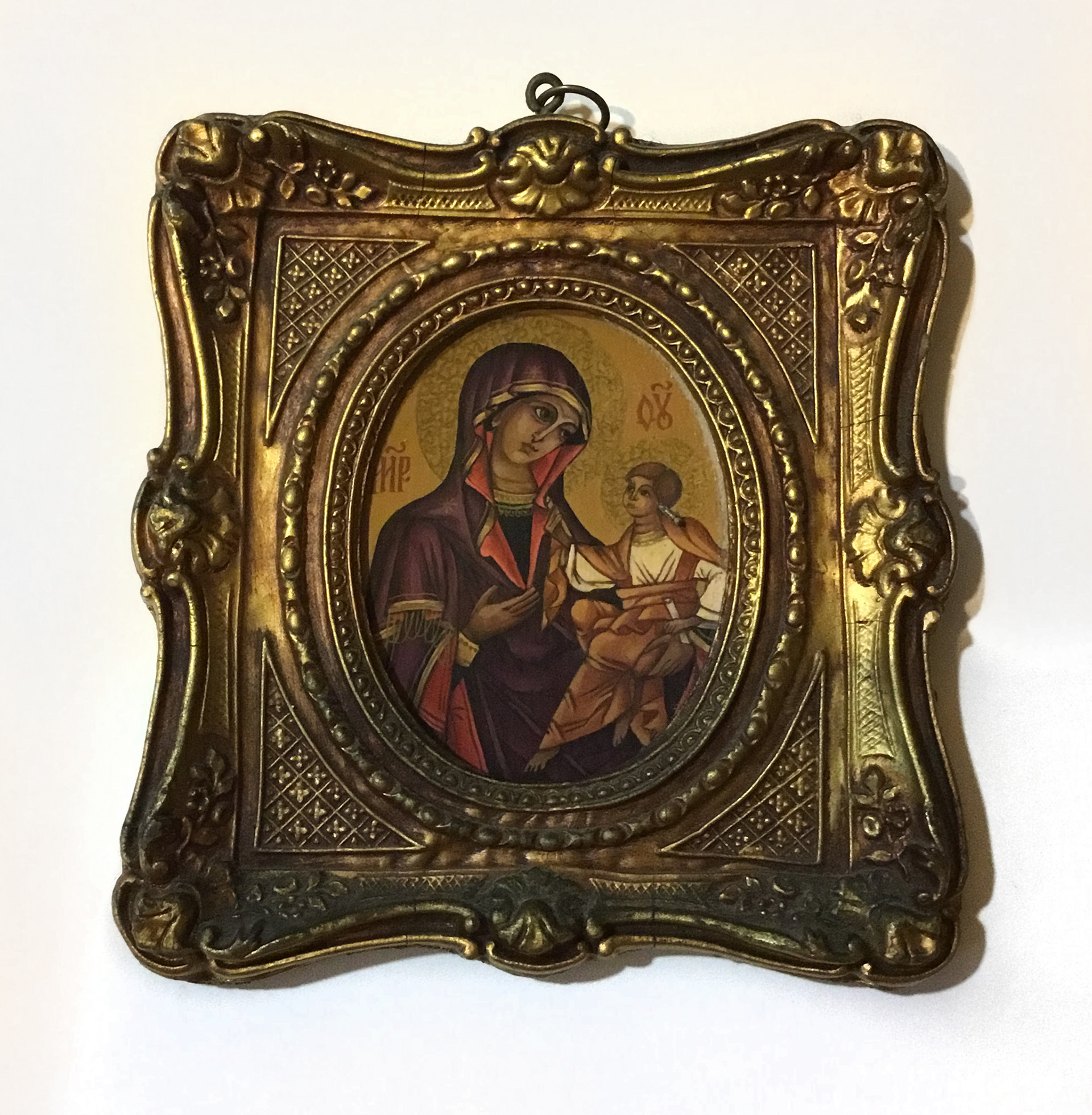
My miniature icons. 2002.
Me in front of Street Church in Susdal, Vladimir Region.
Twenty some-odd years later, I returned to this area on a walk-about, searching out abandoned churches and the beautiful/sad art left to the elements.

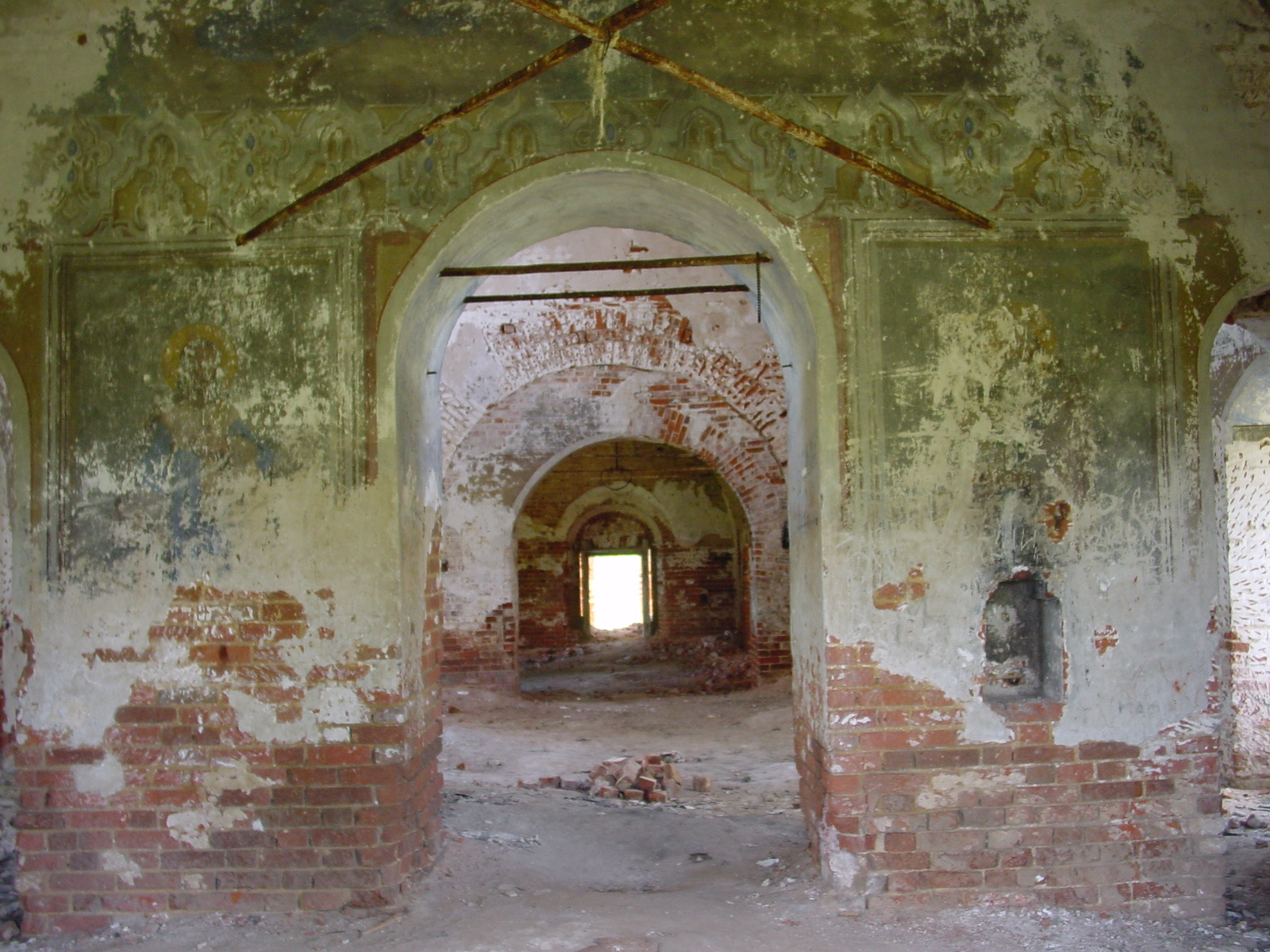


Trip to Russia 2011
My art has taken many turns and spirals over the years. Below are current depictions of angels... as I see them.
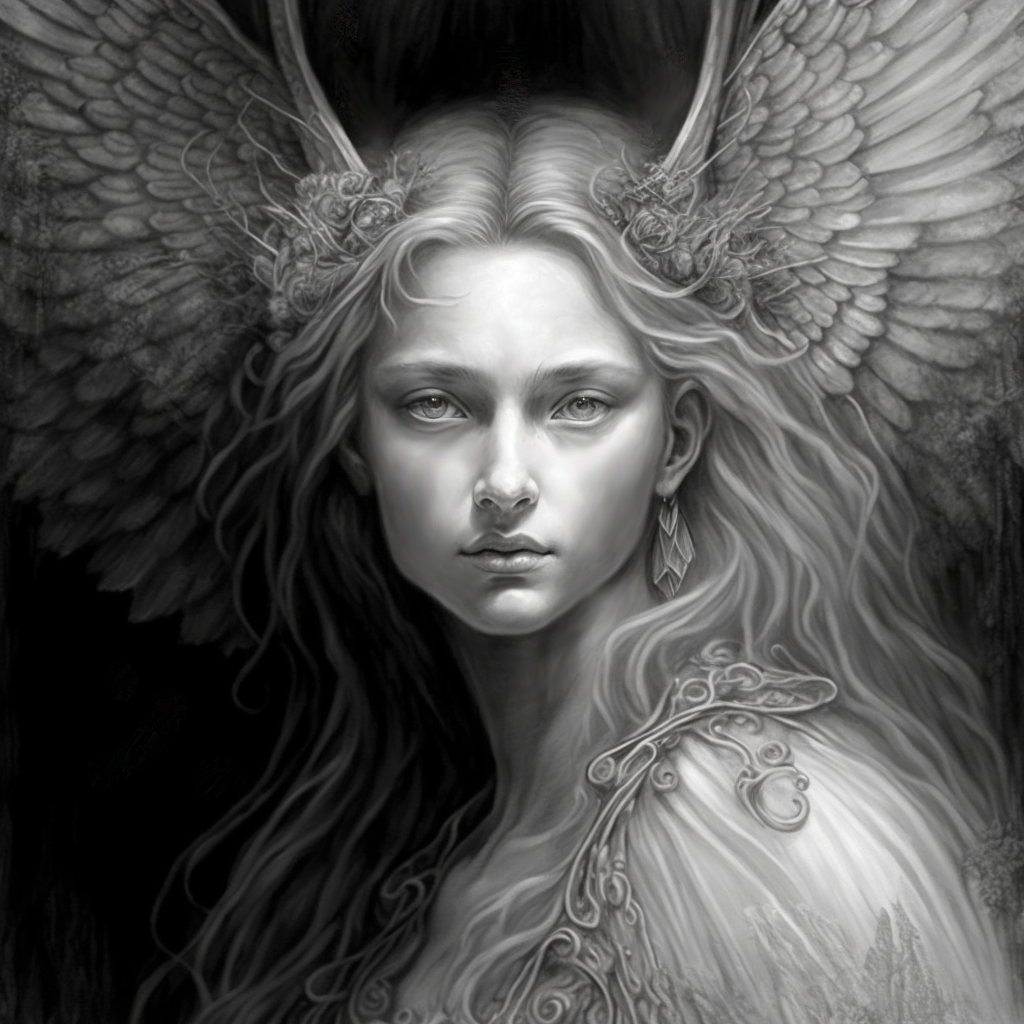
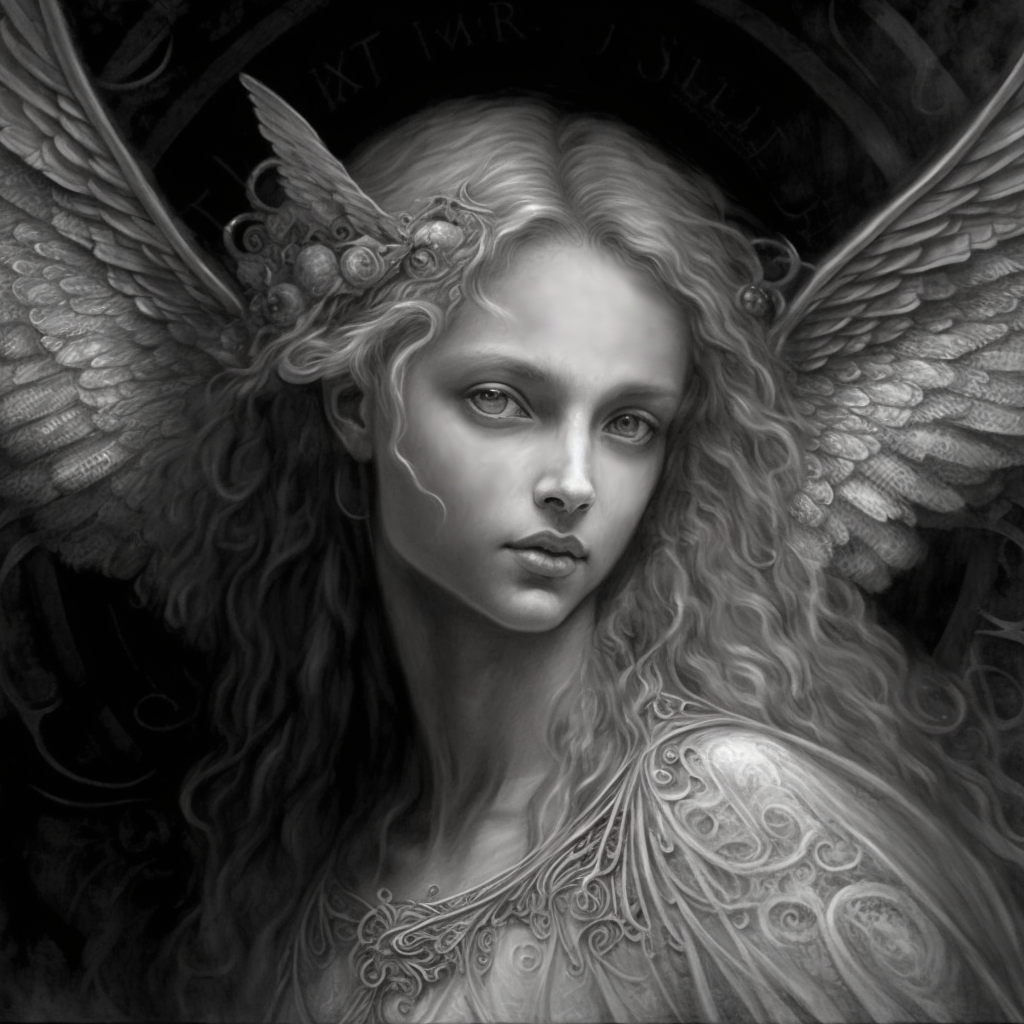
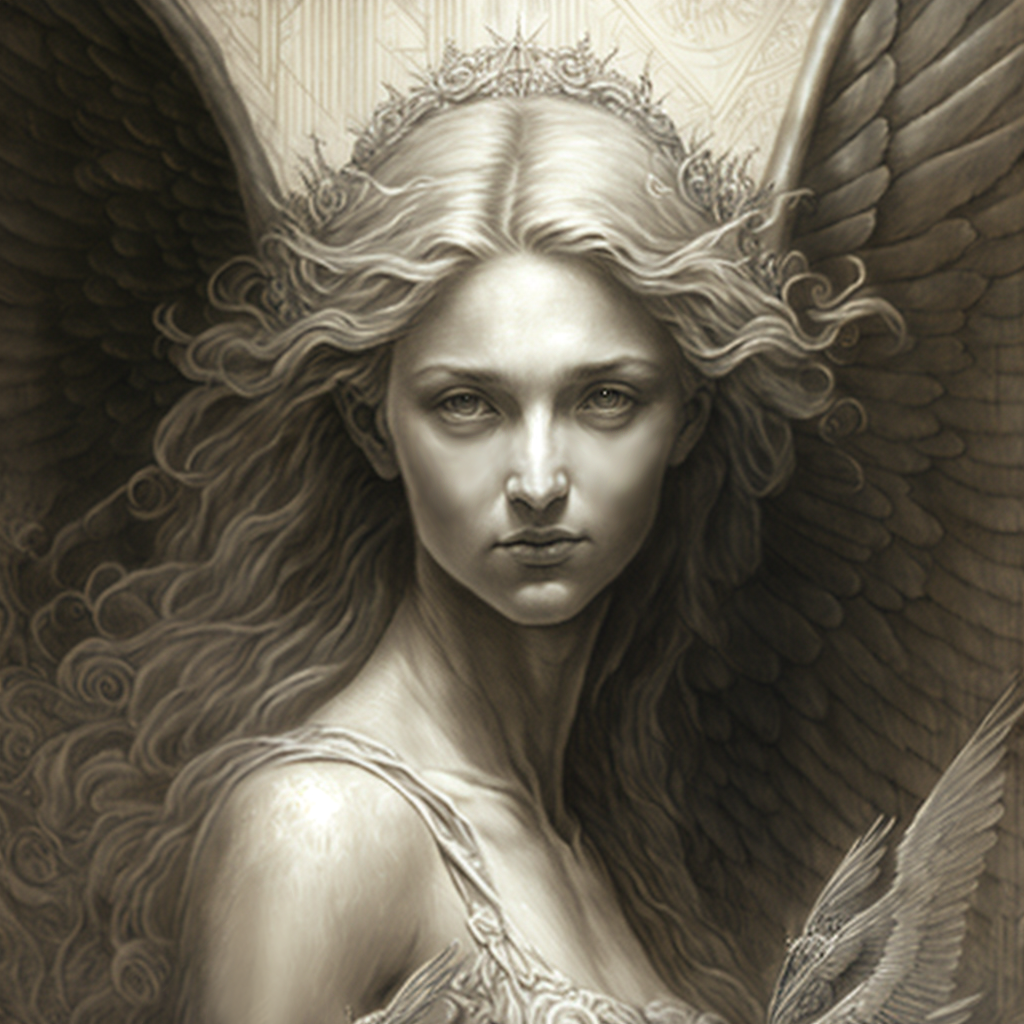
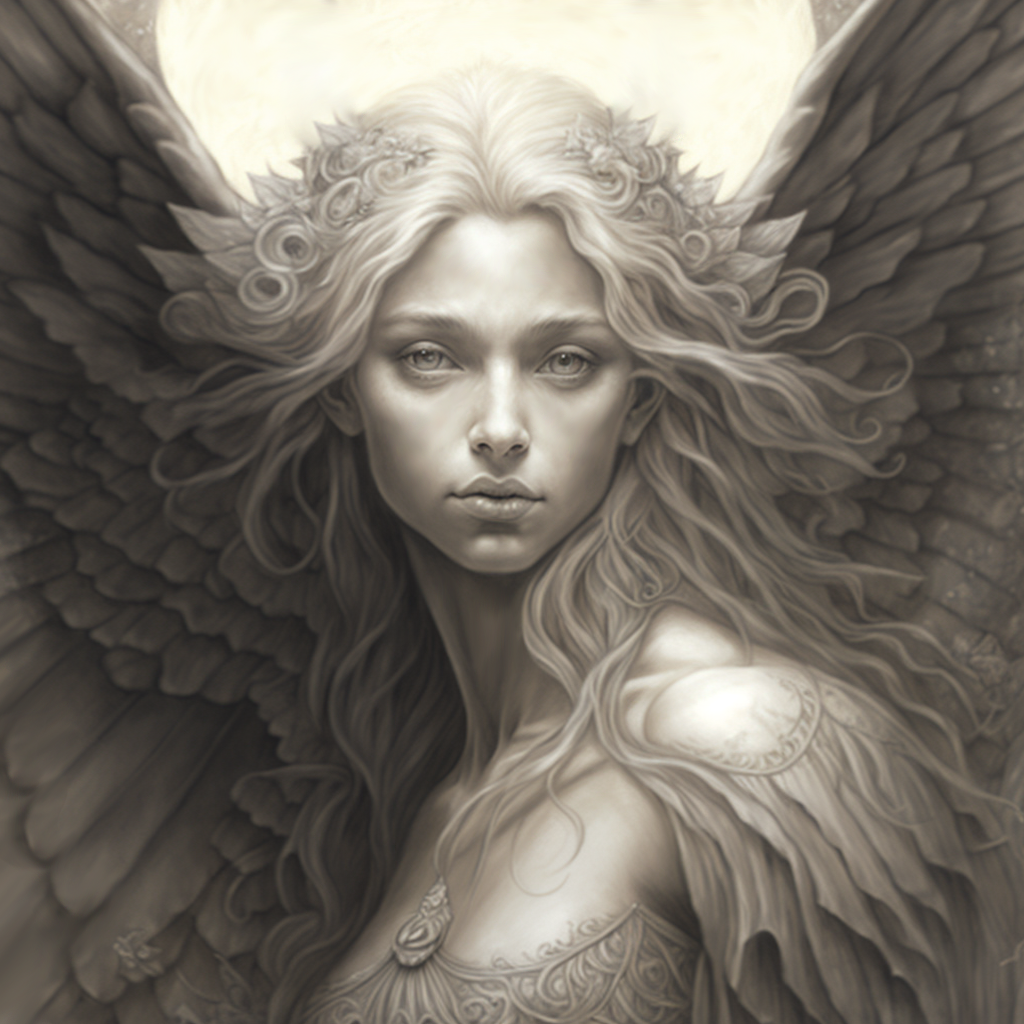
Pen & pencil drawing.

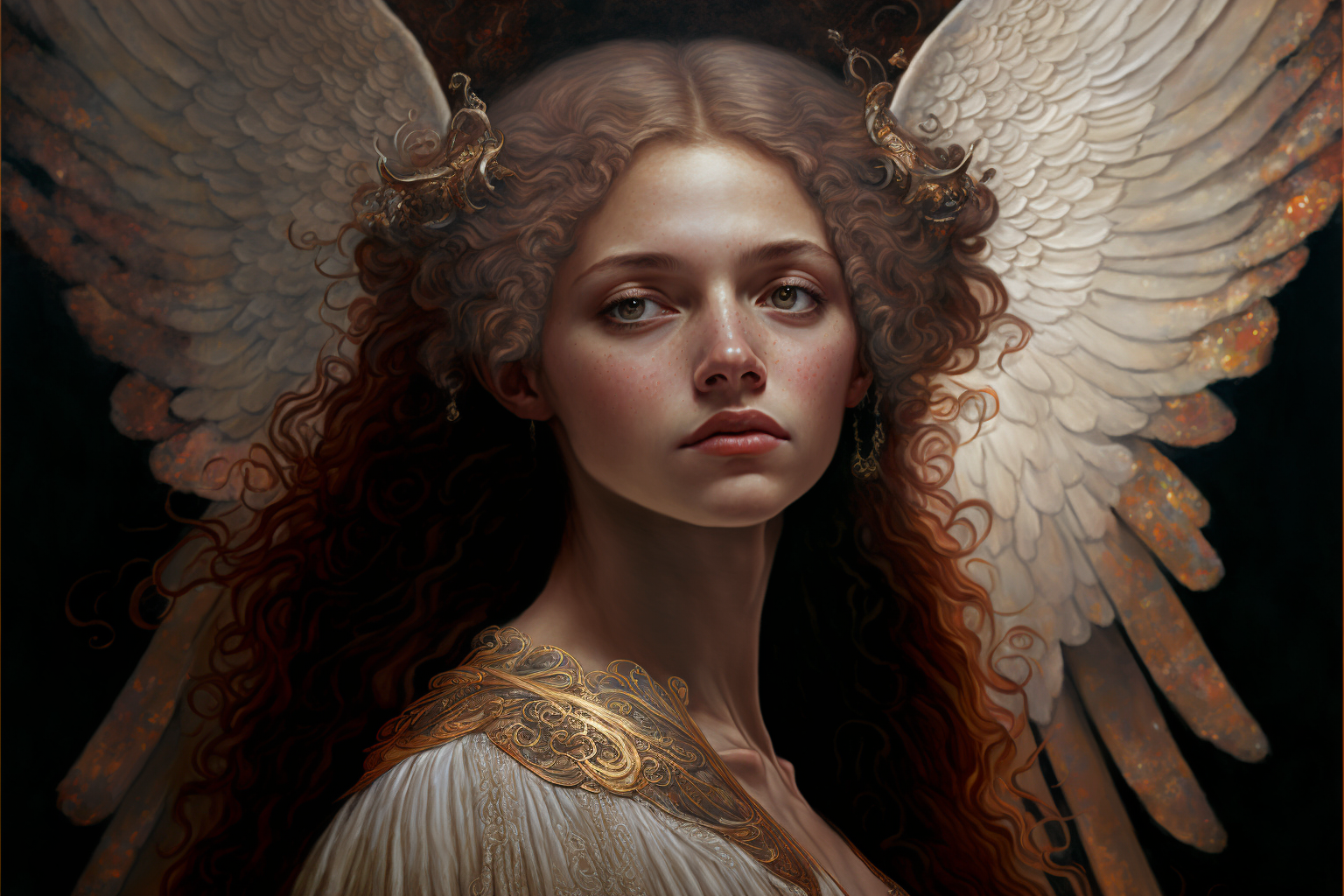
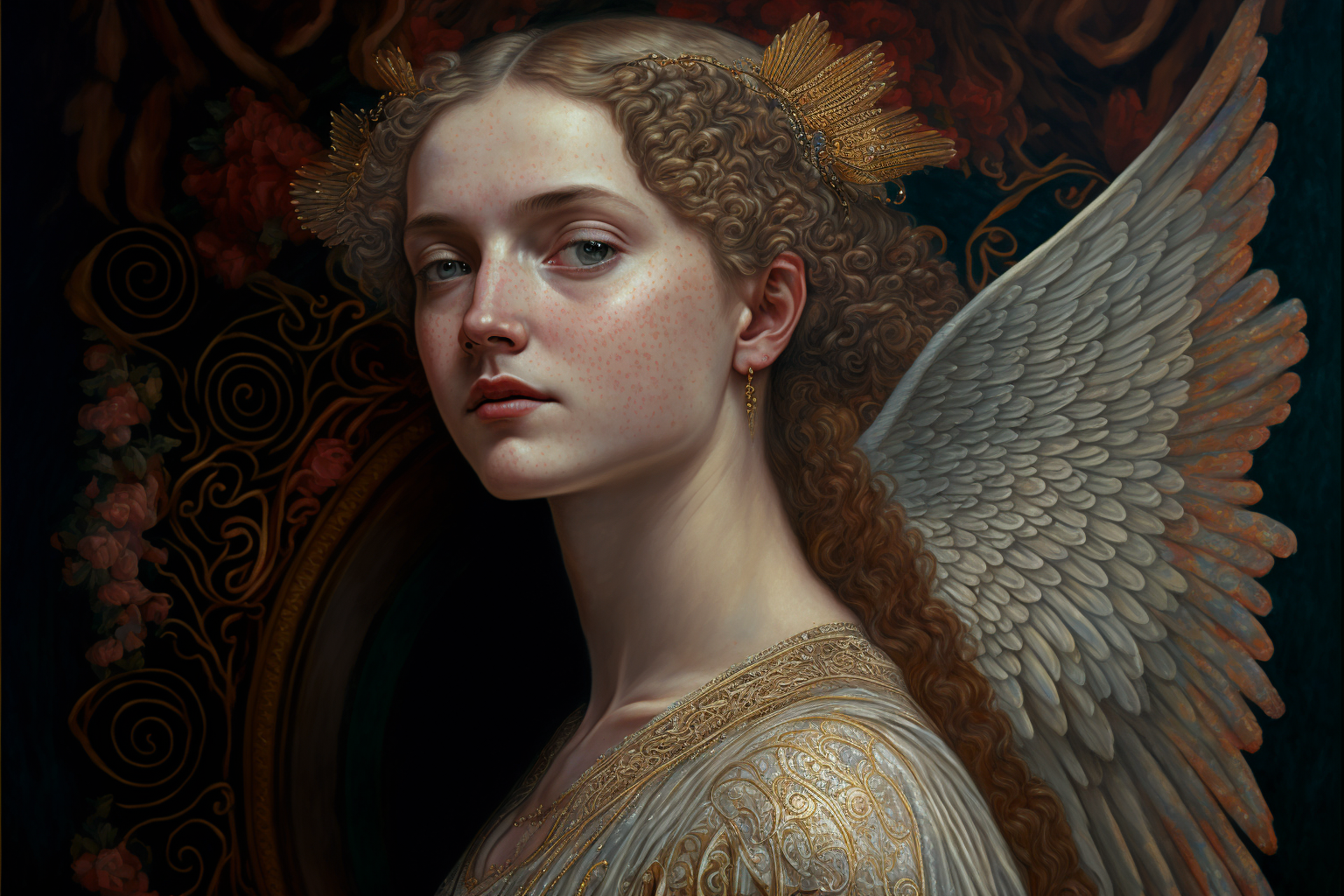
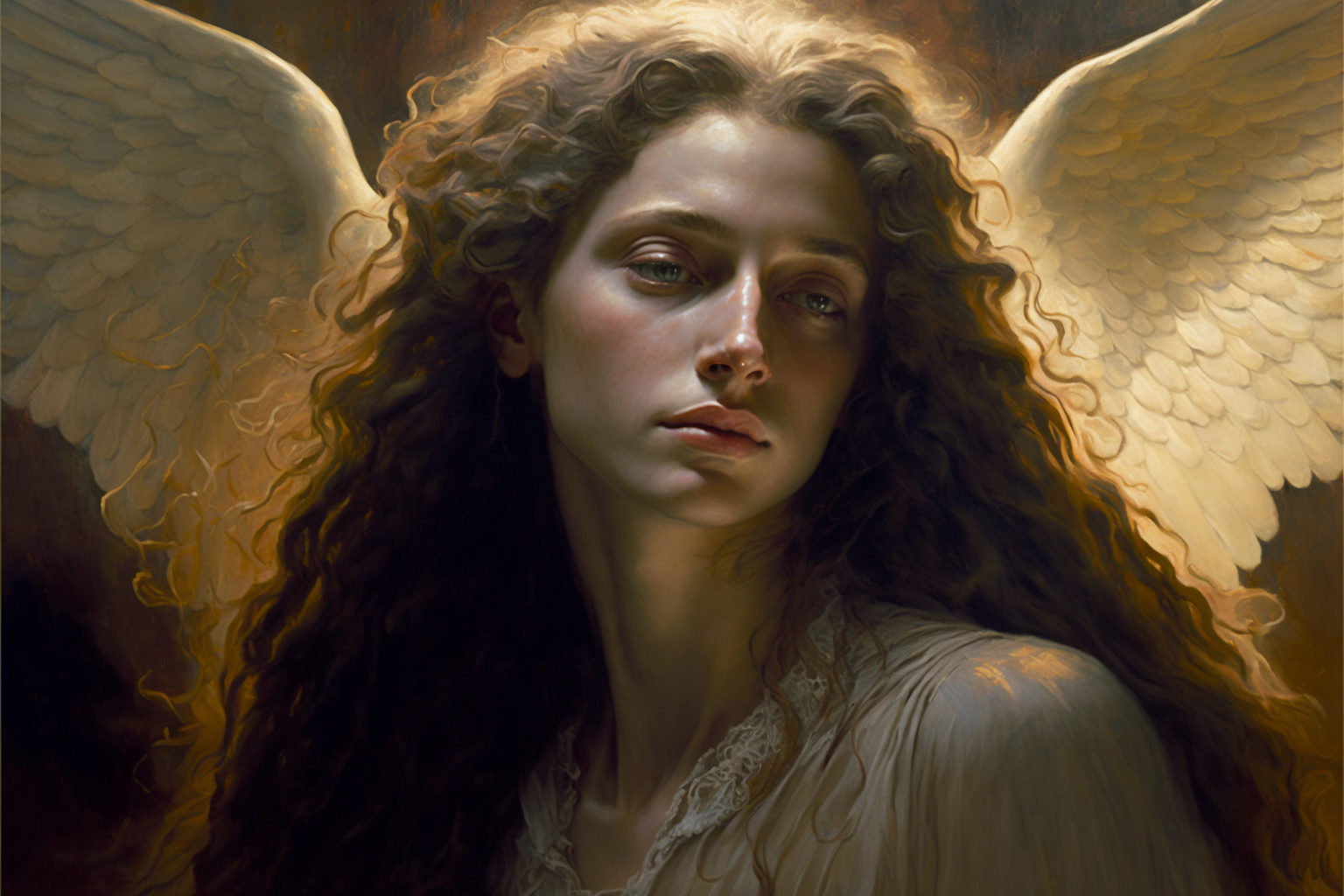
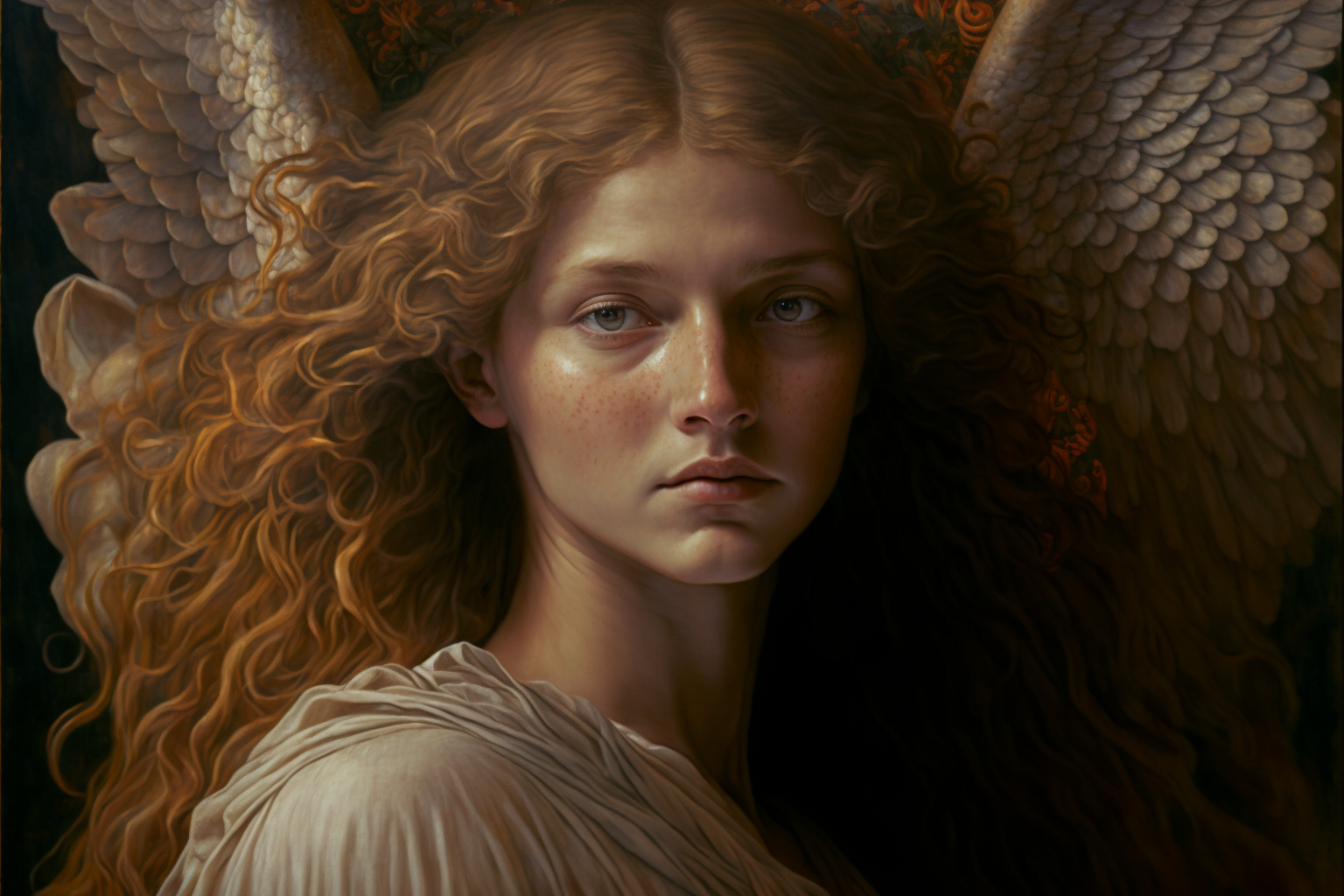
Classical art has always been the anchor of my creative style. Mixed media artwork.
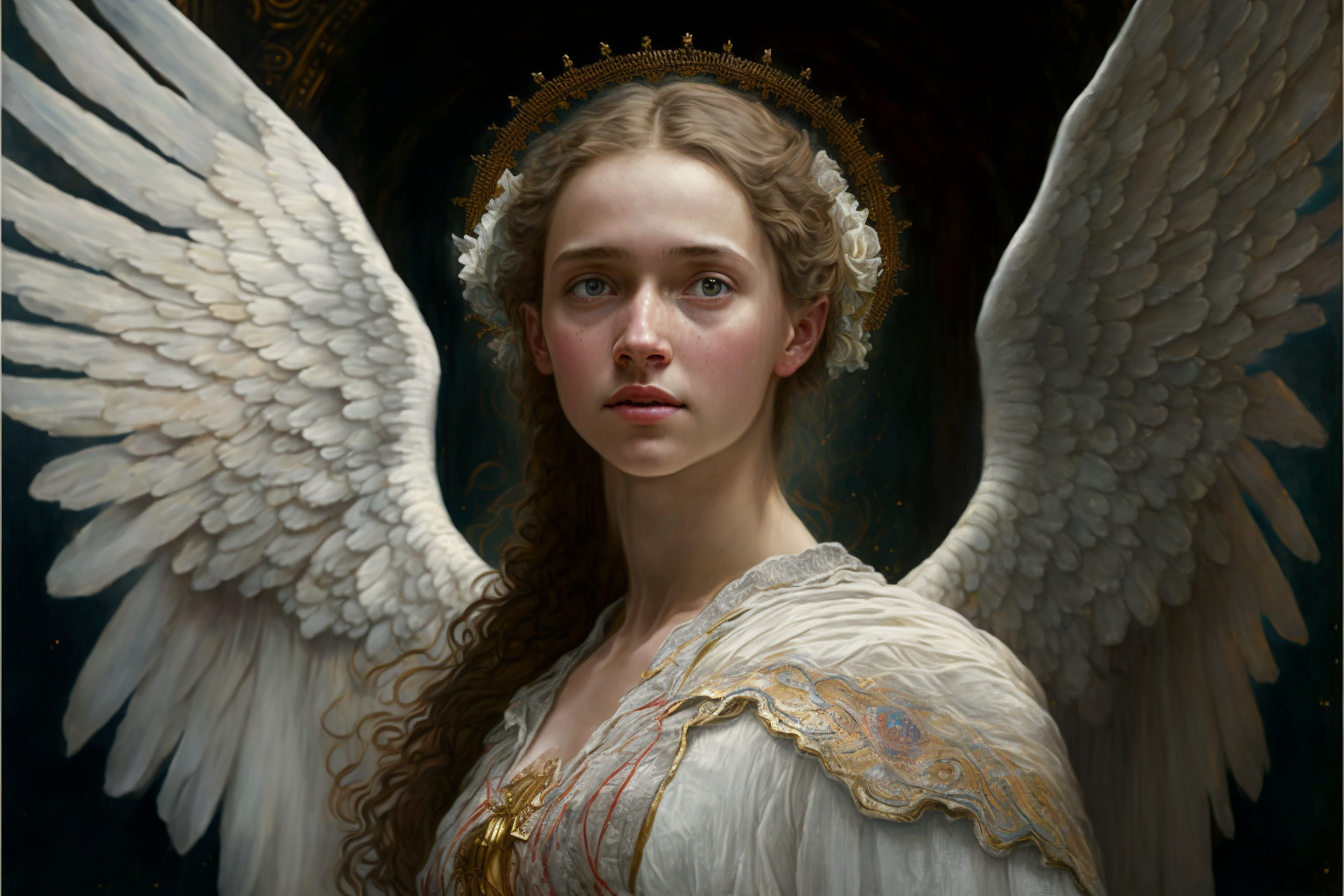
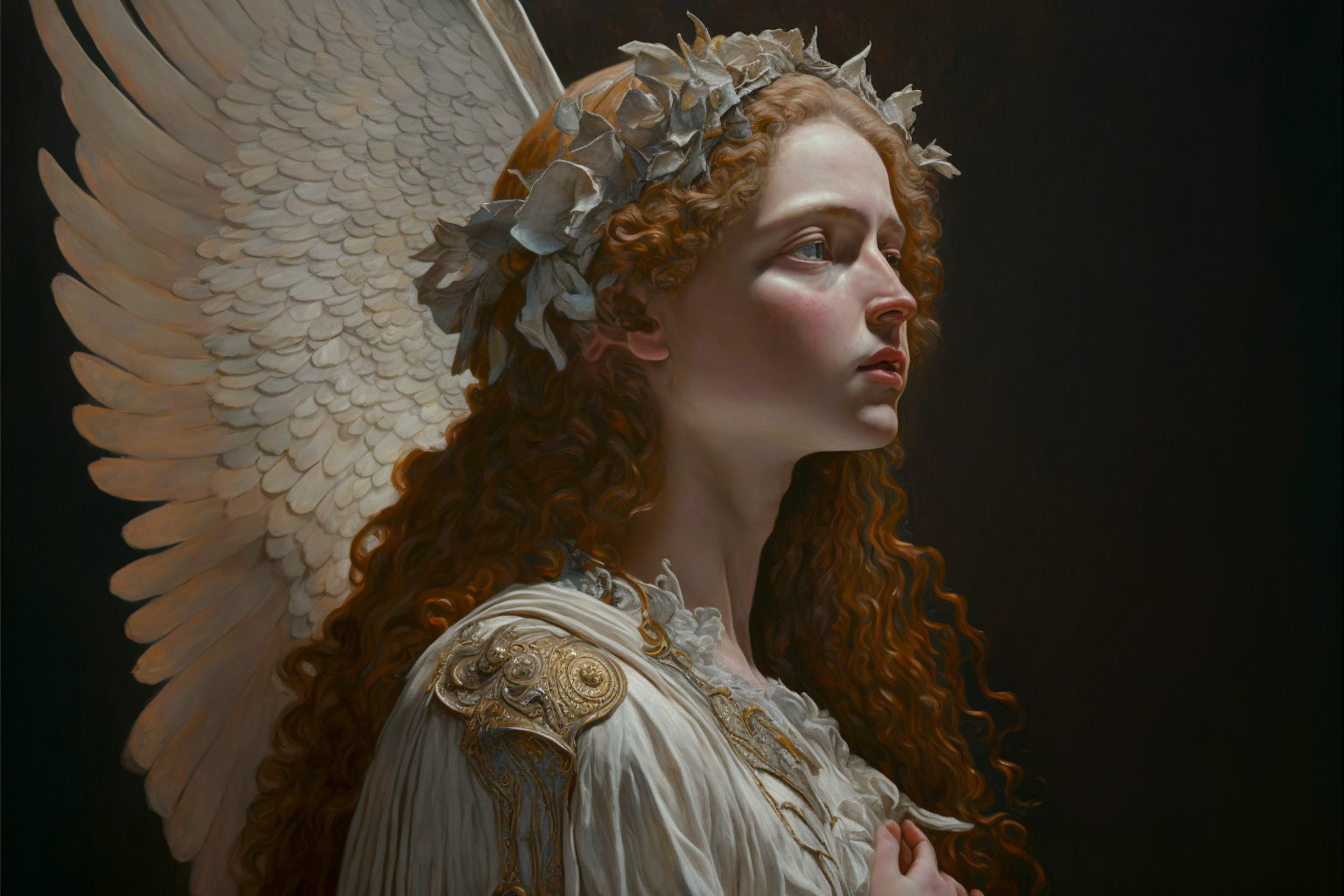
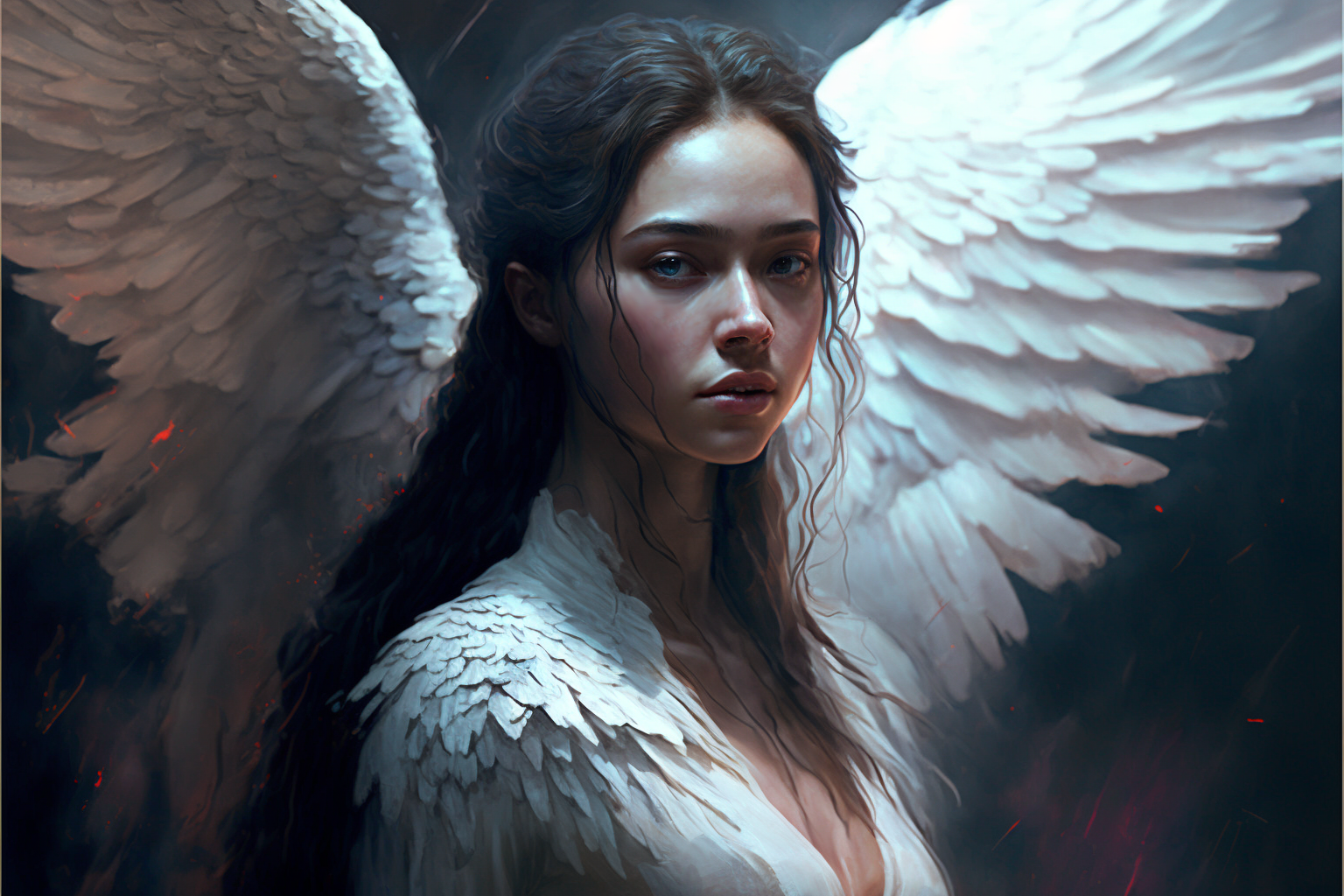
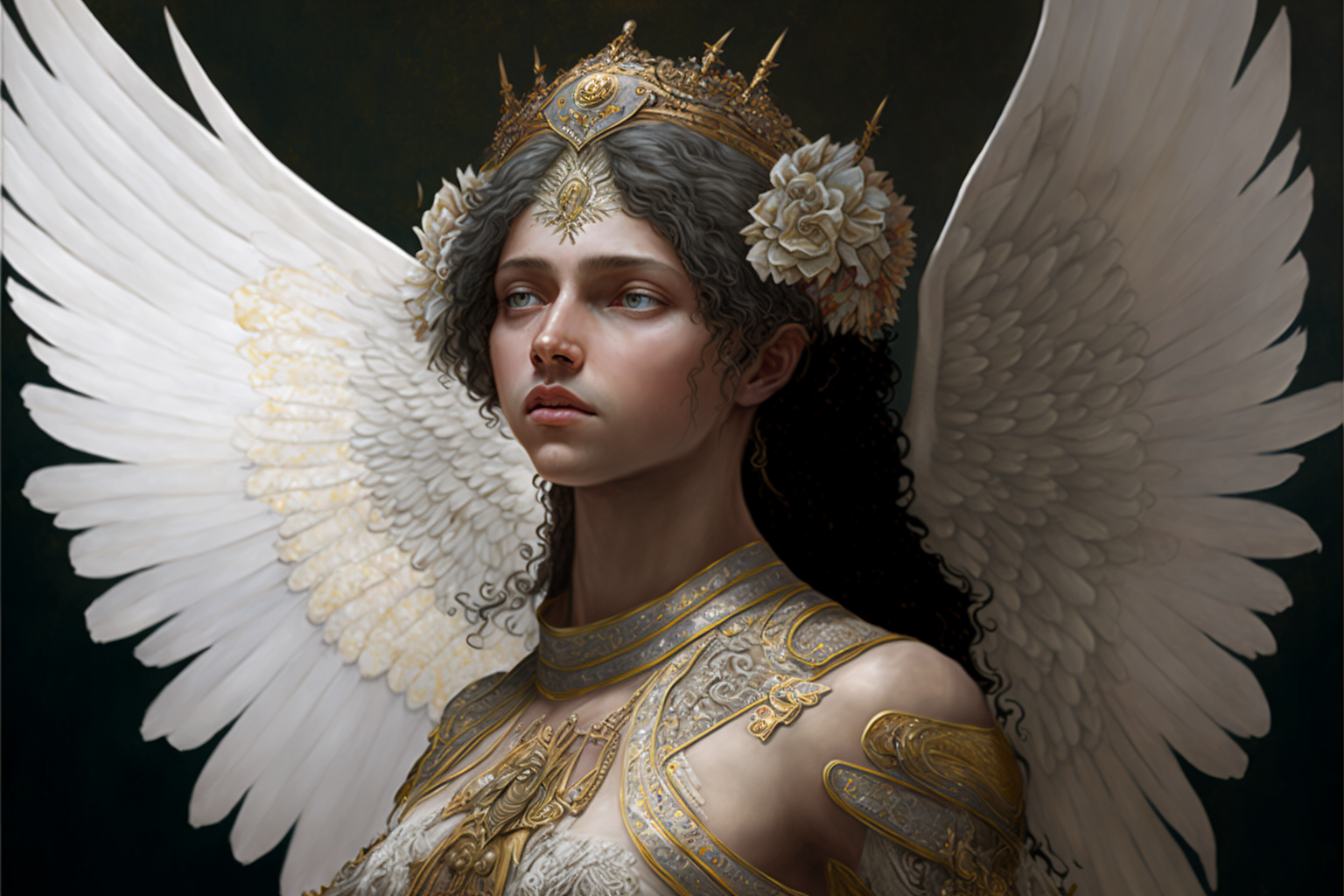
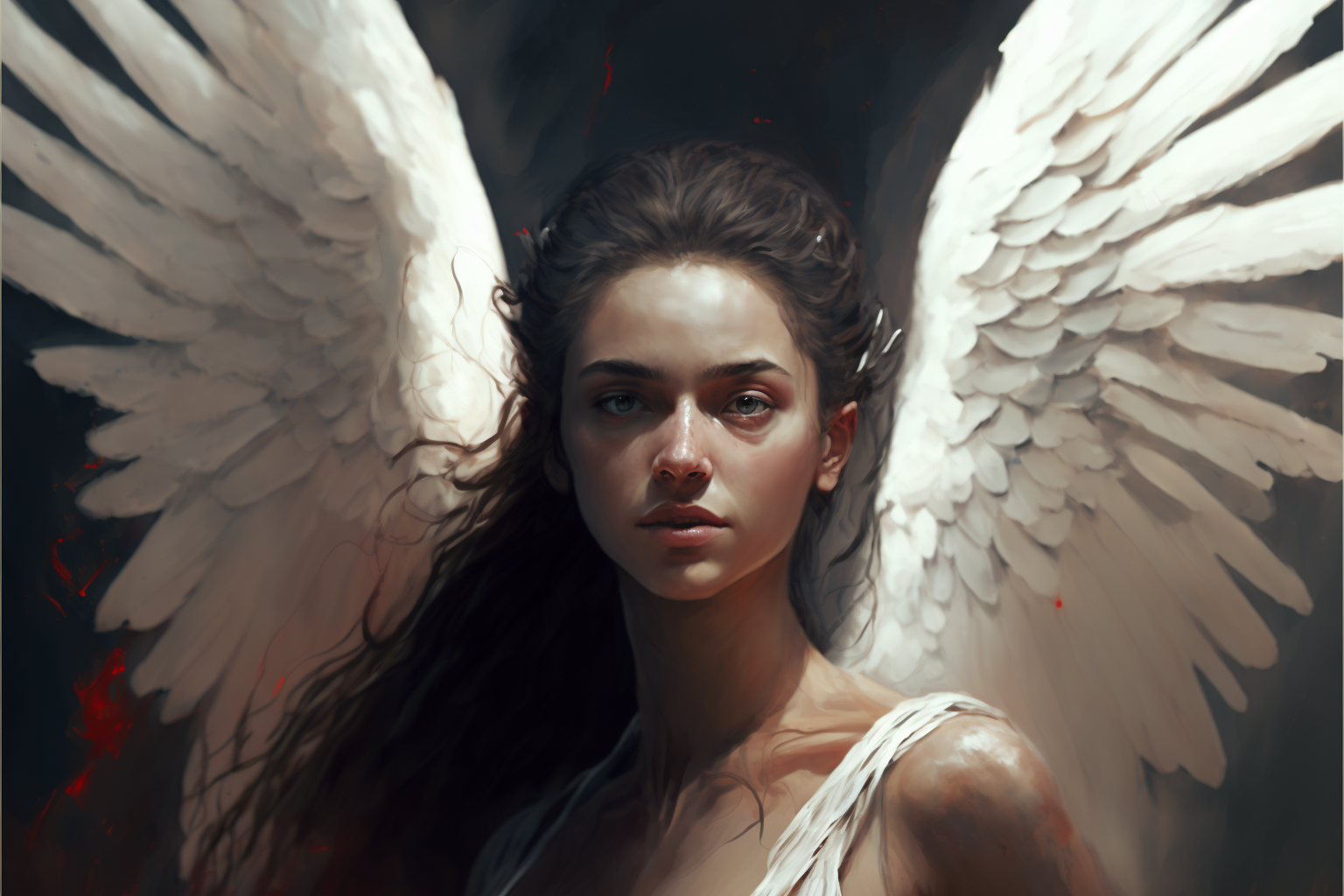
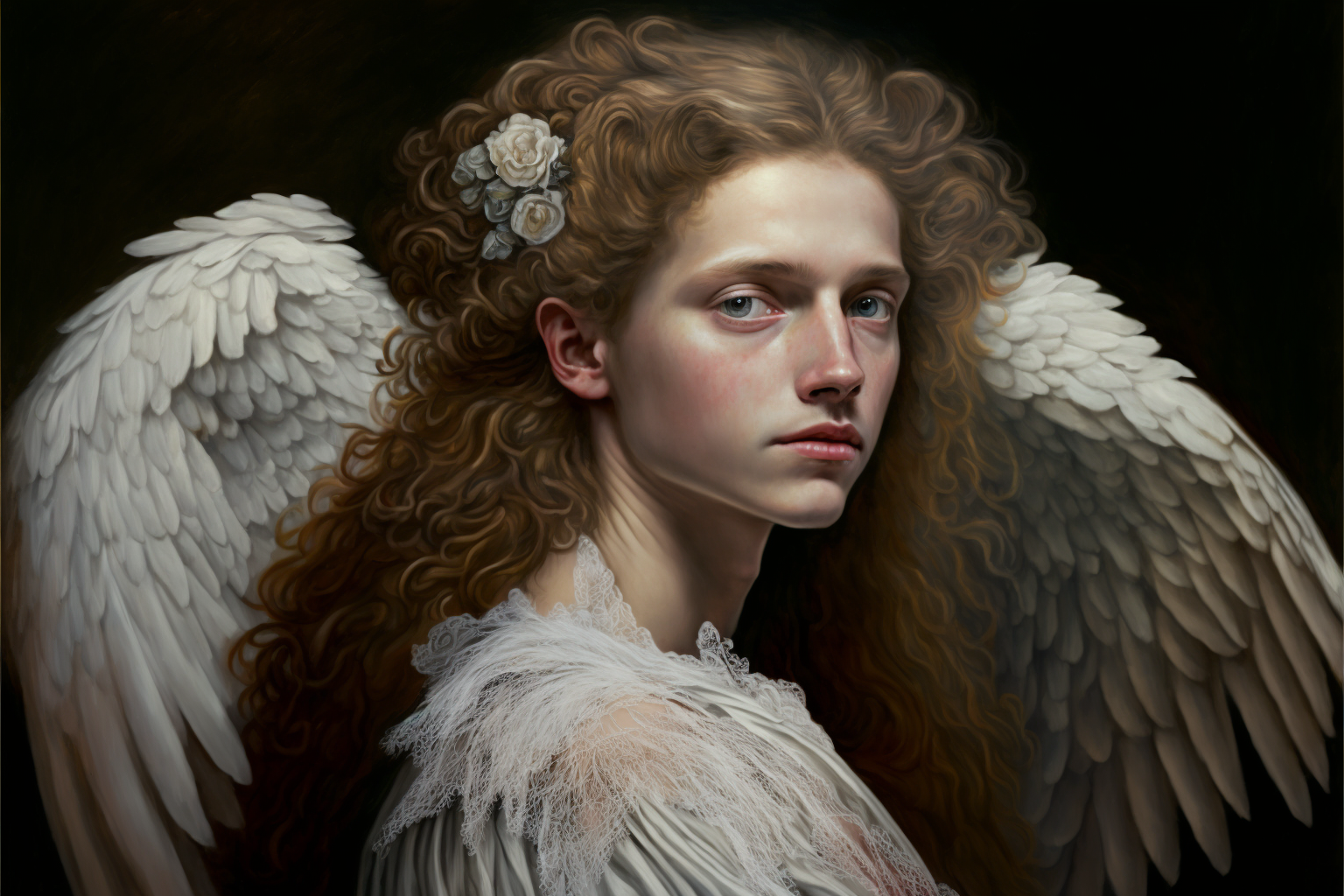
Digital art.
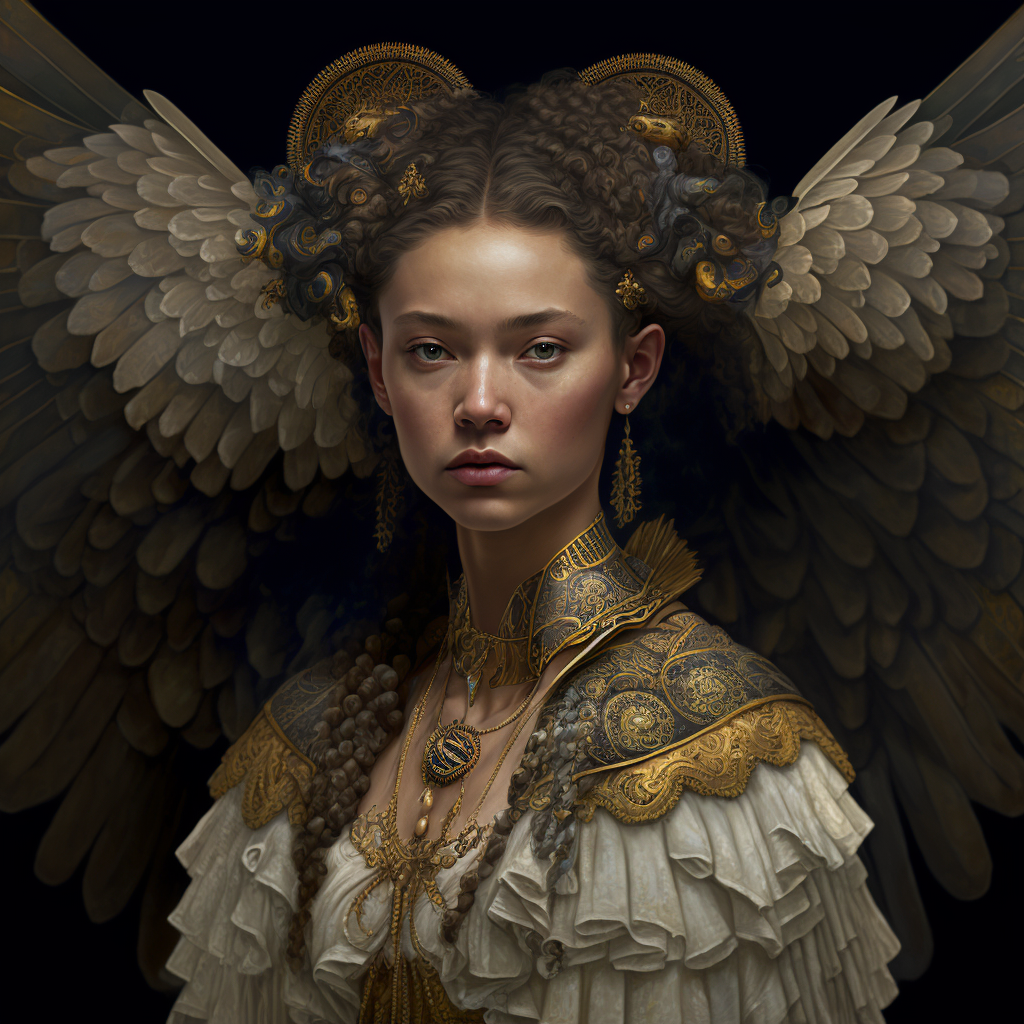
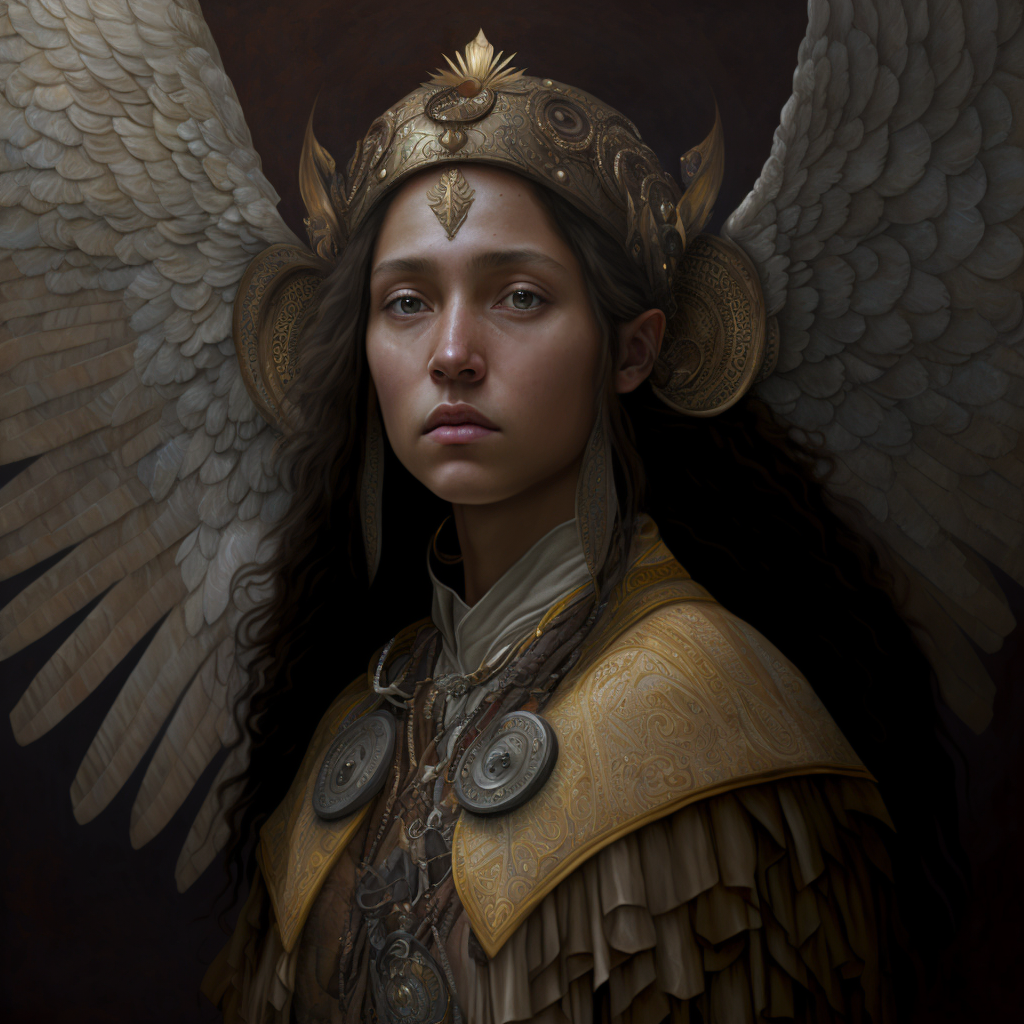
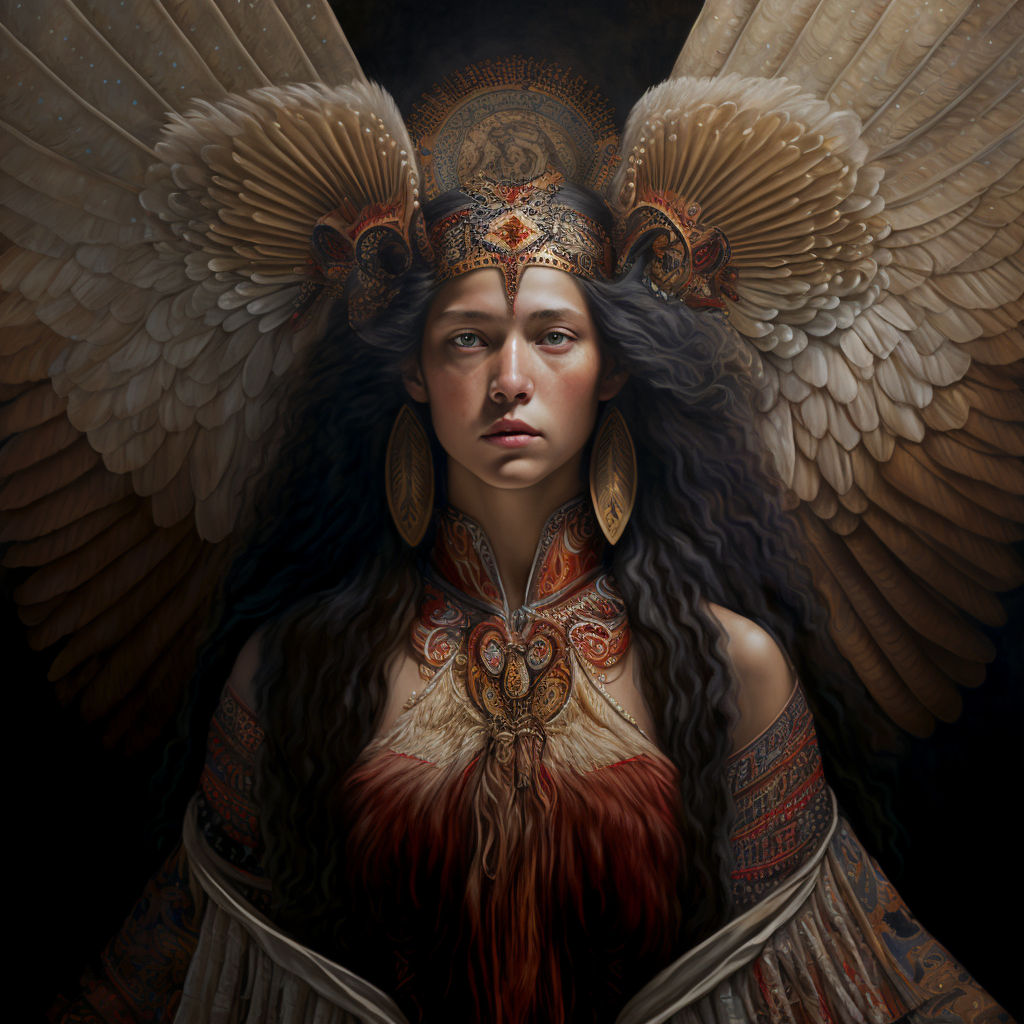
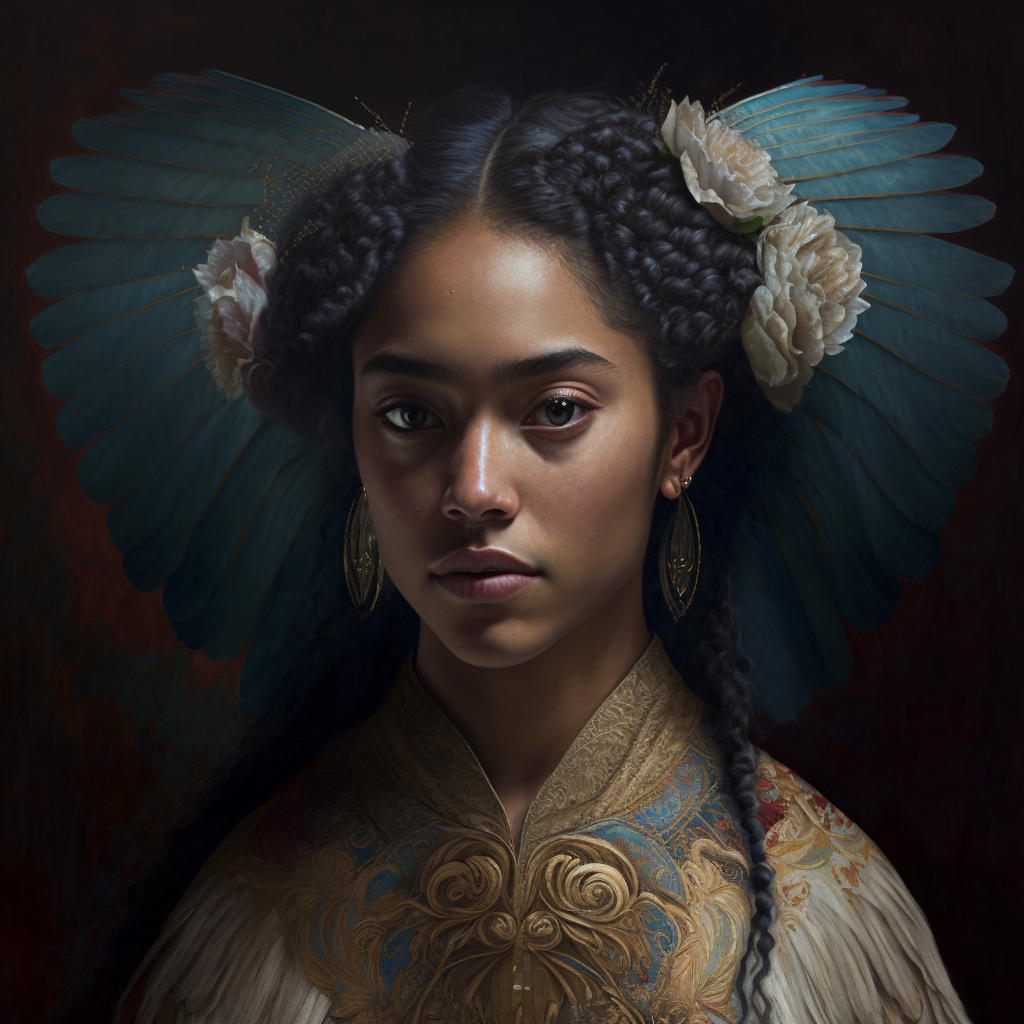
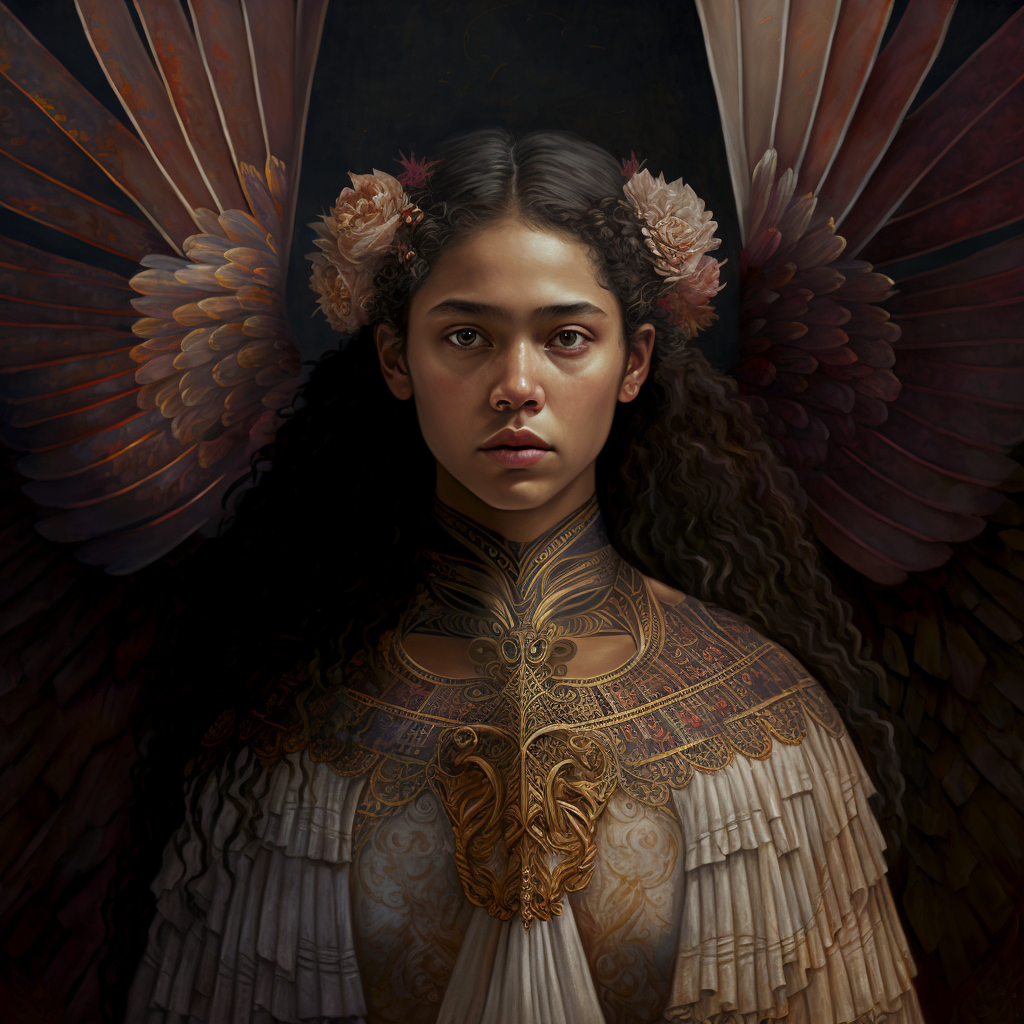
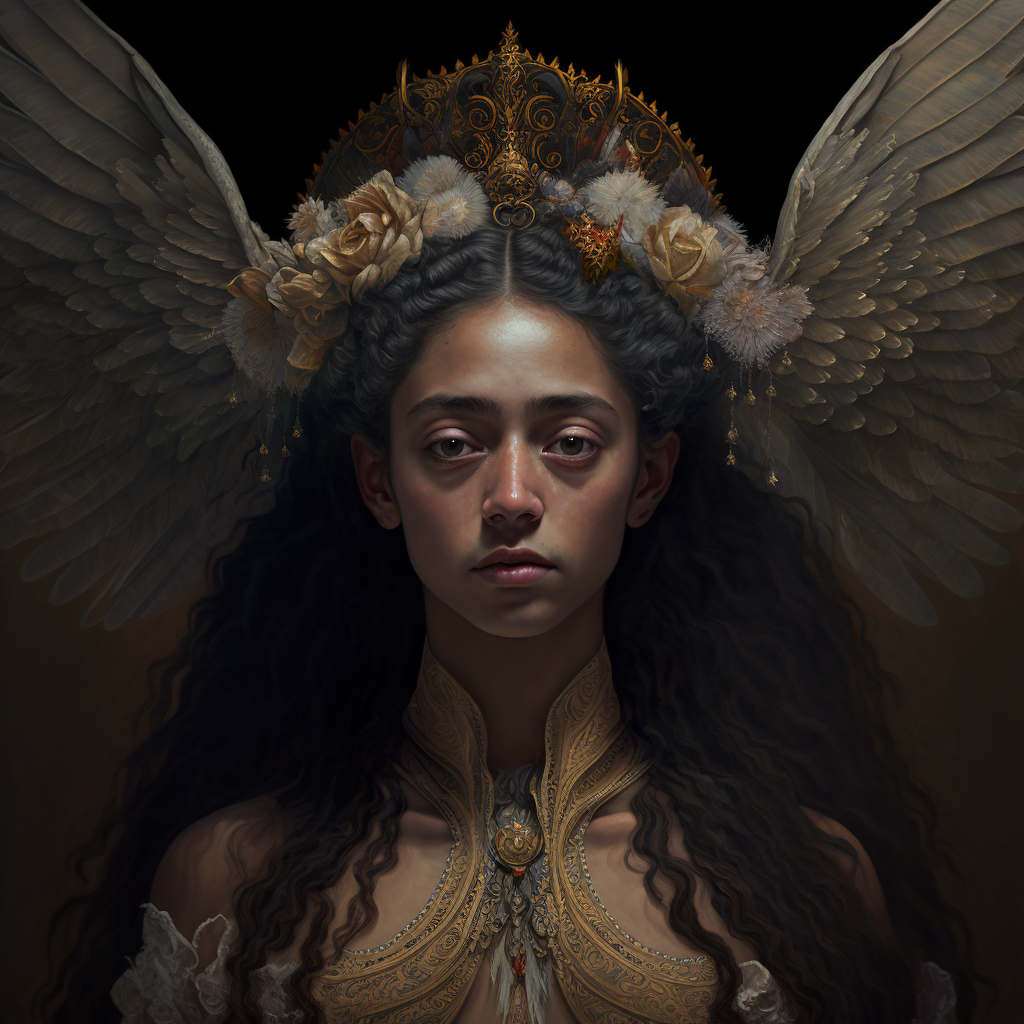
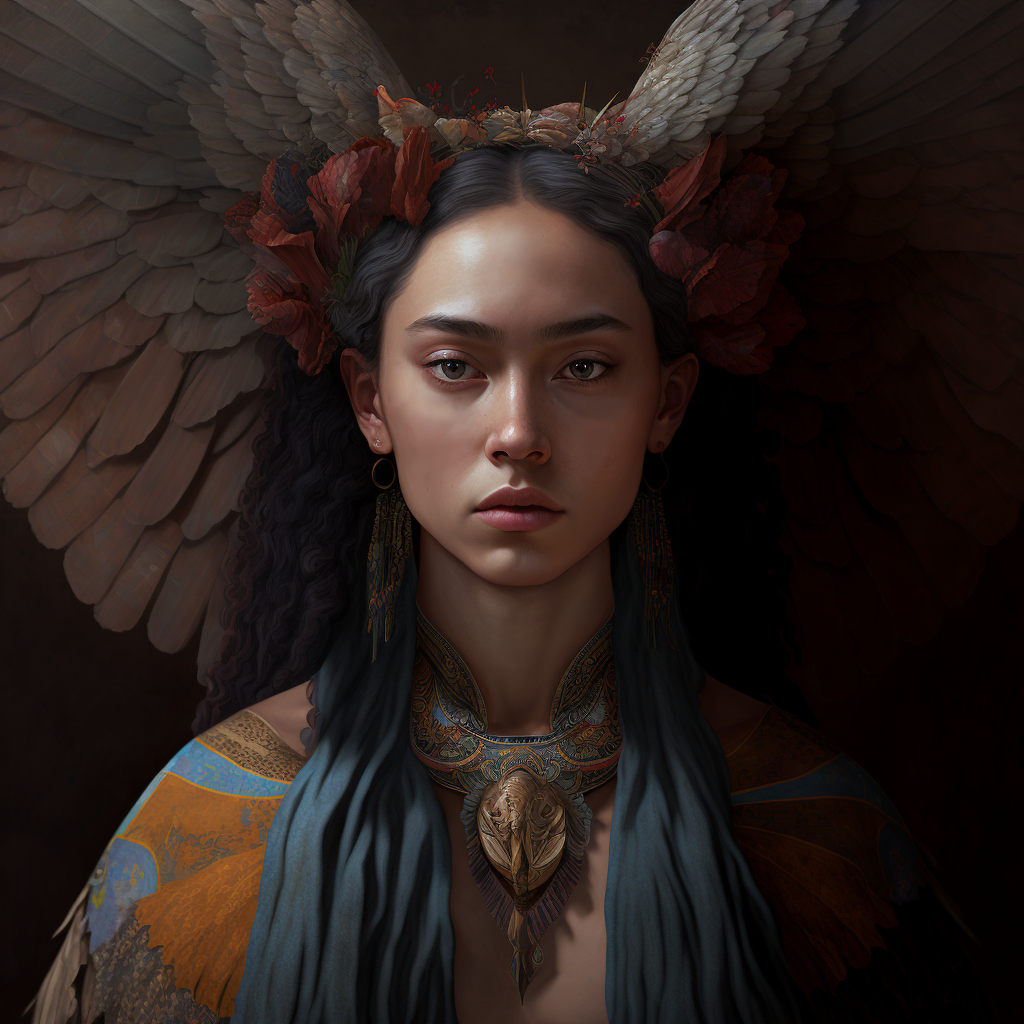
Indigenous Angels. Digital Art.
With only one image, it becomes very challenging to capture the essence of the written story, but a series of images can tell a larger story. The name of this series is "An Ordinary Angel." I've been revisiting this theme for many years but believe that I have finally found a perfect media. The following images were created with AI art and Adobe Photoshop.
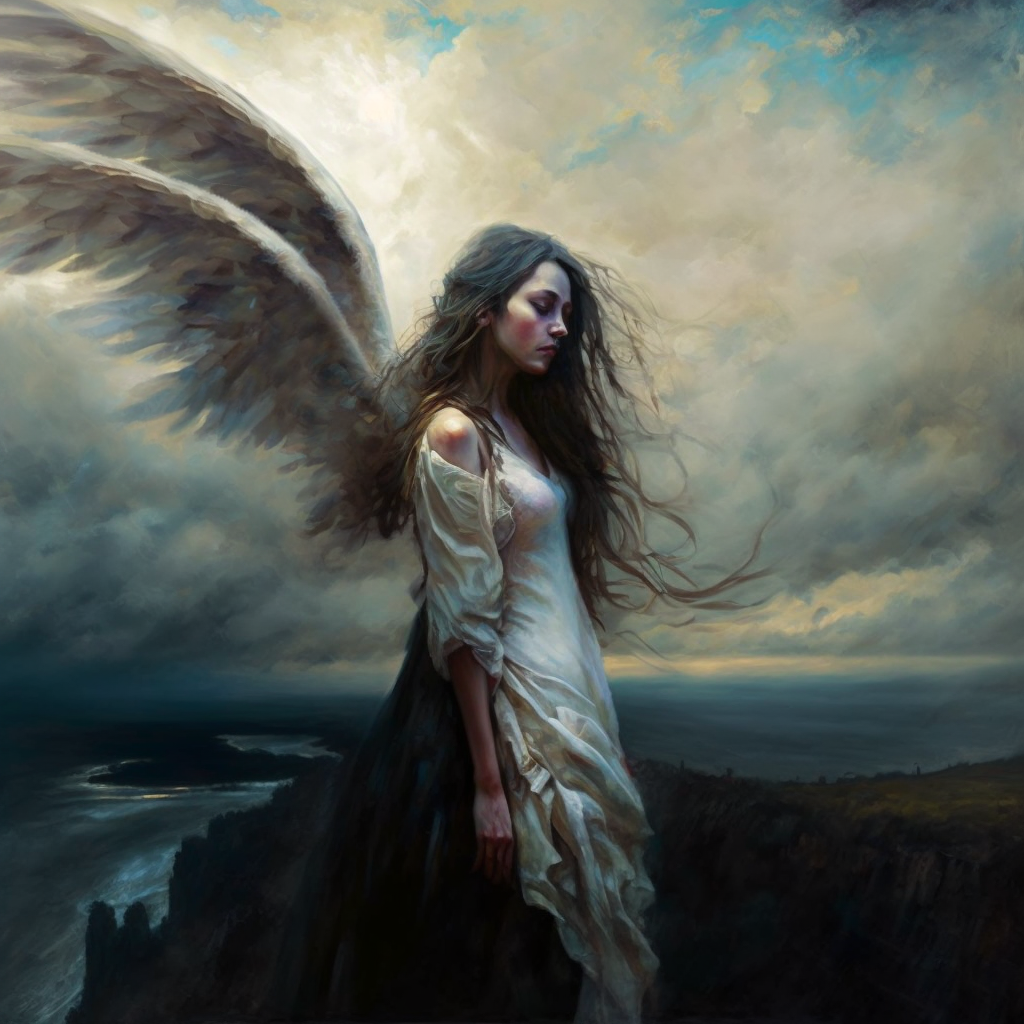
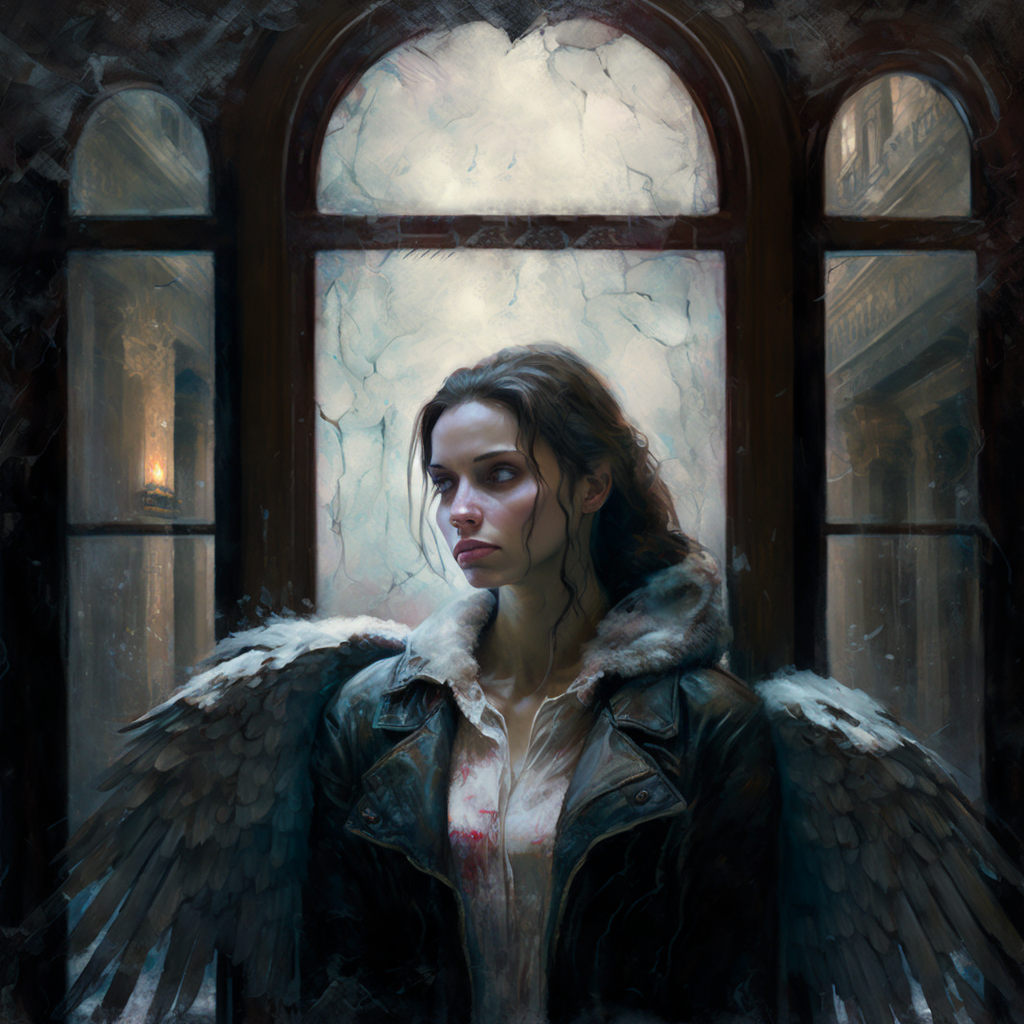
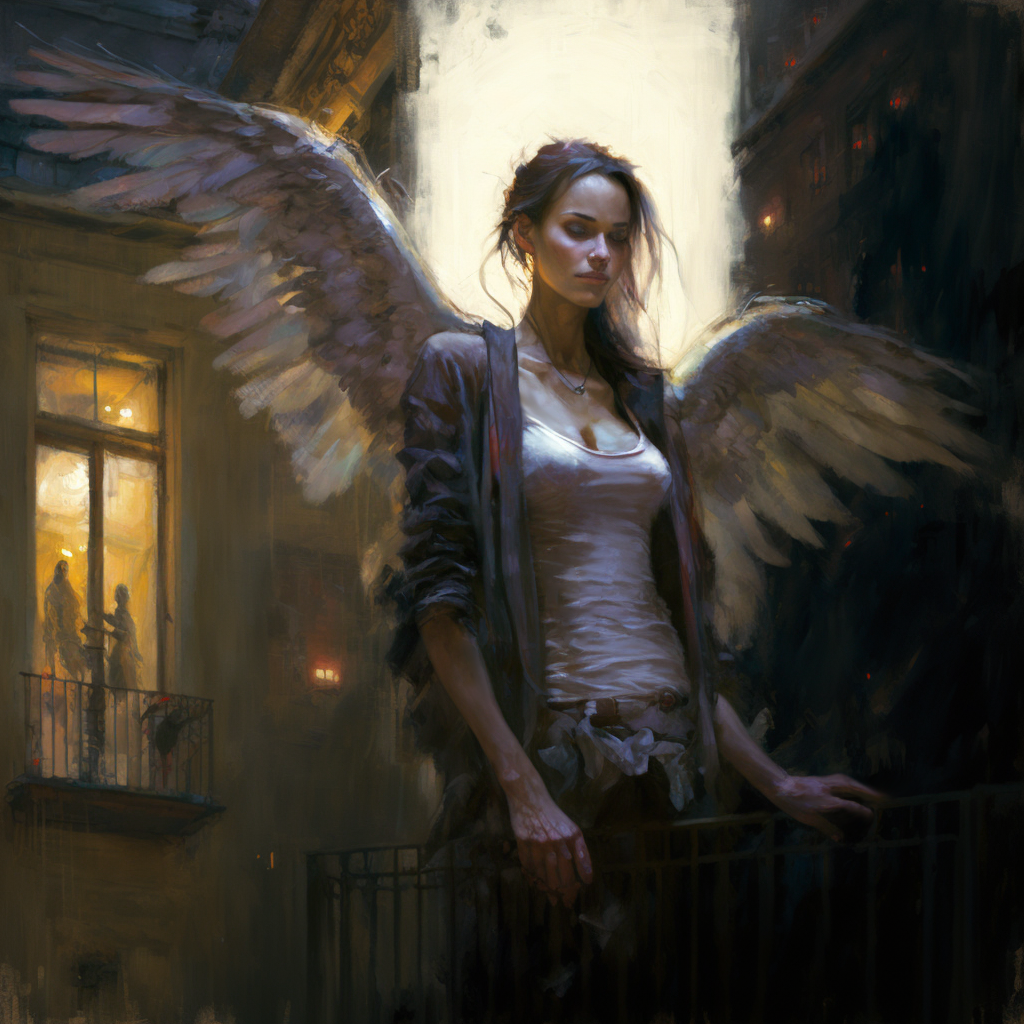
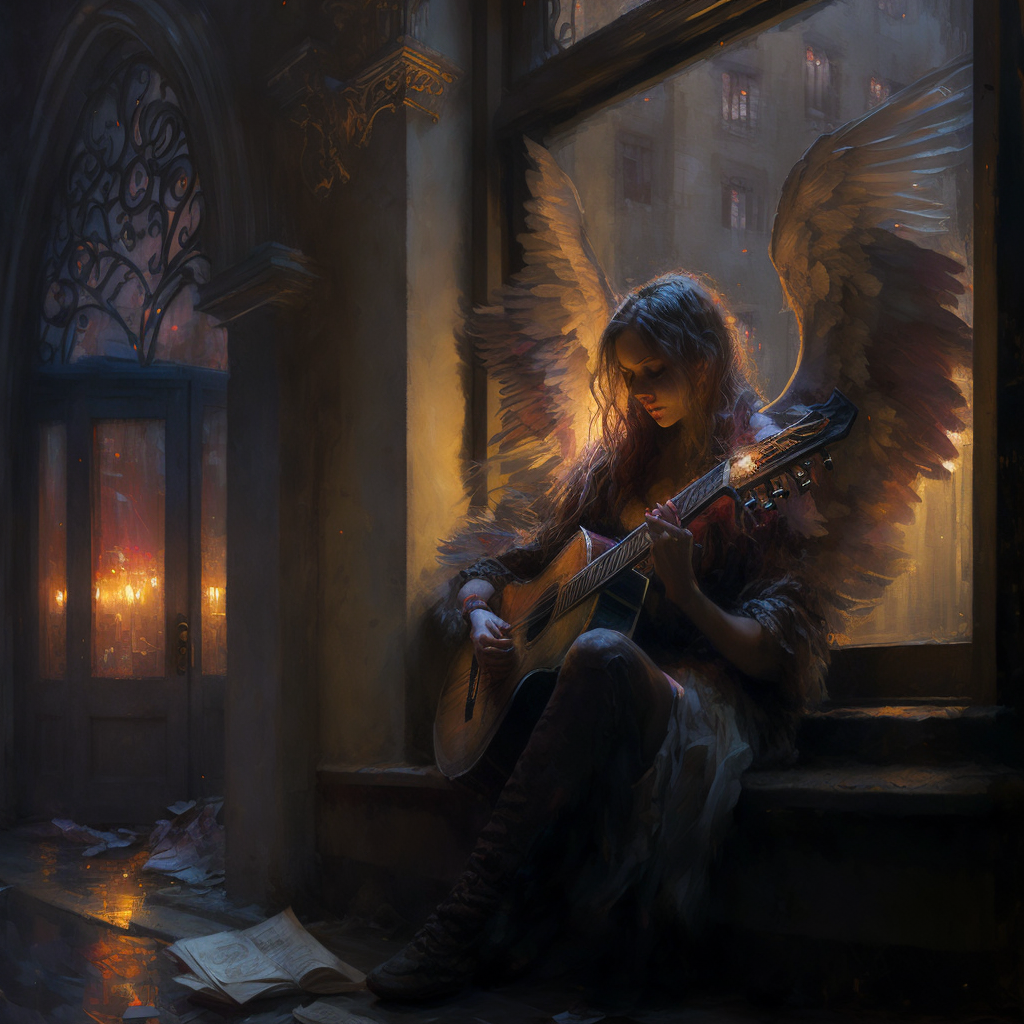
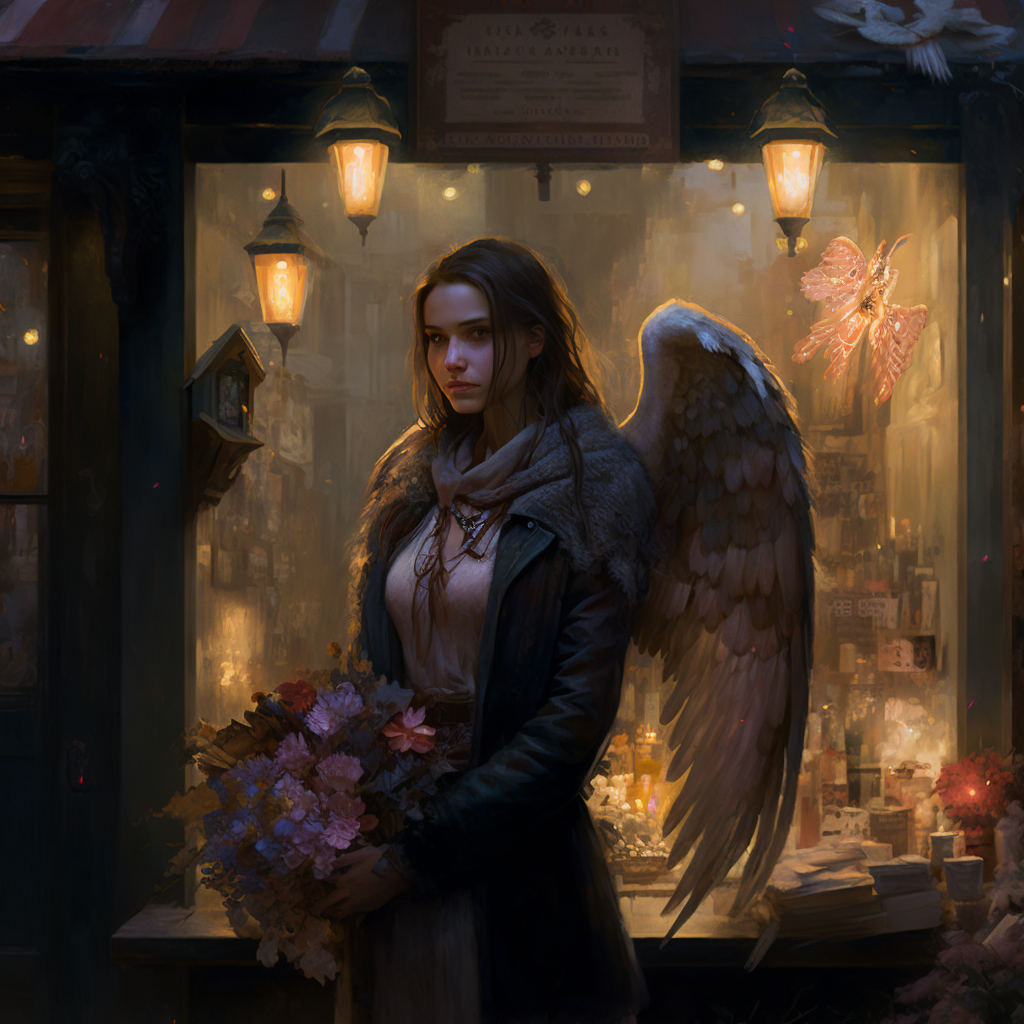
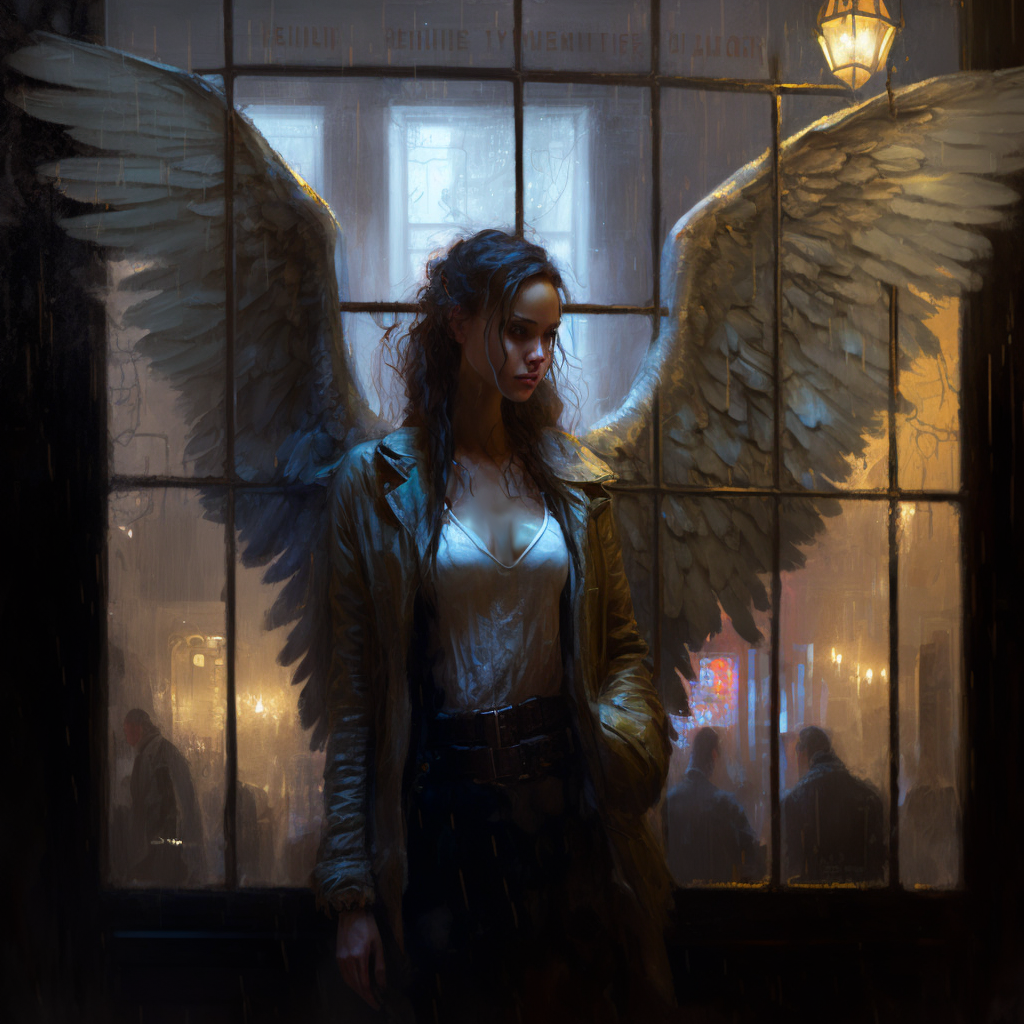
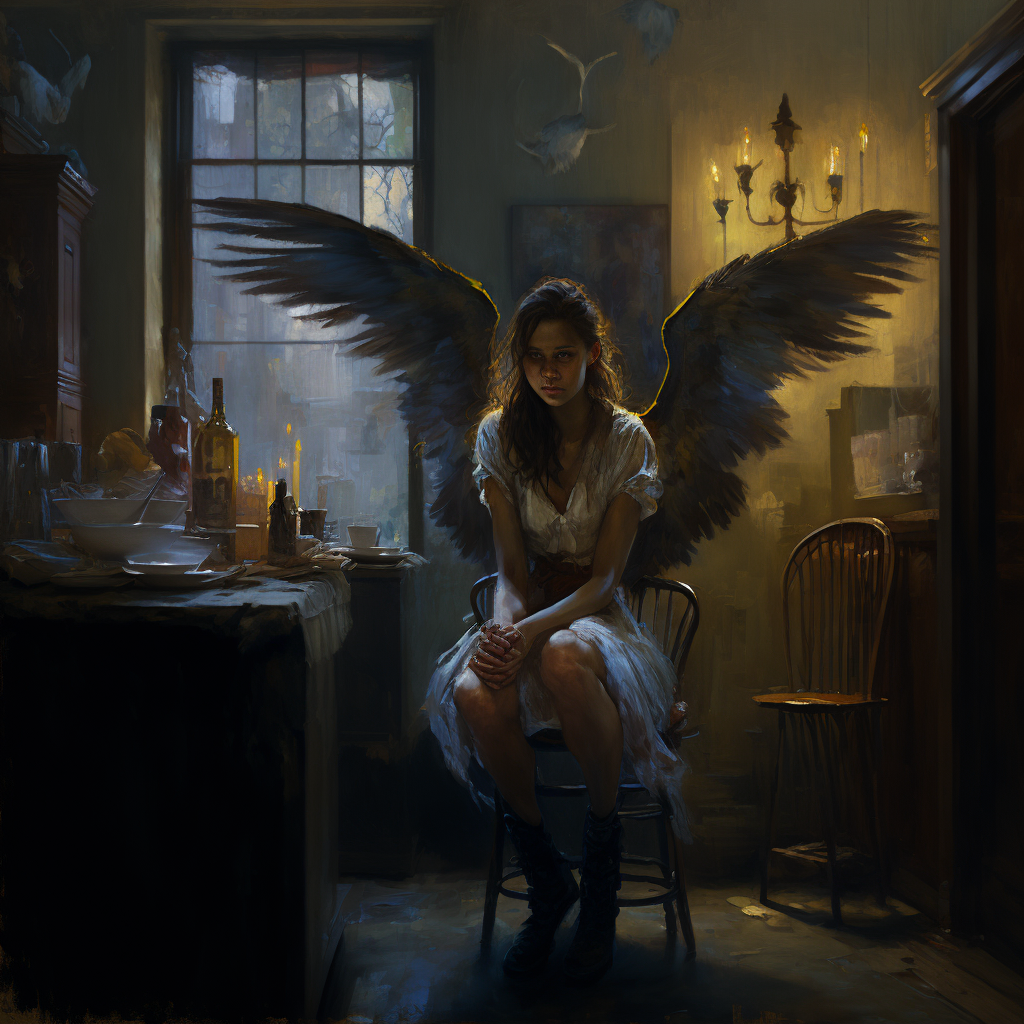
Now I see angels in modern setting as "the angels among us."